Description of Placement Procedures for Common Methods Used in Equine Emergency Rescue Using a Simplified Loops System
Abstract
:Simple Summary
Abstract
1. Introduction
2. Materials and Methods
2.1. Loops System
2.2. Procedure for Placement of Loops System on a Recumbent Horse Model
3. Results
4. Discussion
5. Conclusions
Author Contributions
Funding
Conflicts of Interest
Appendix A
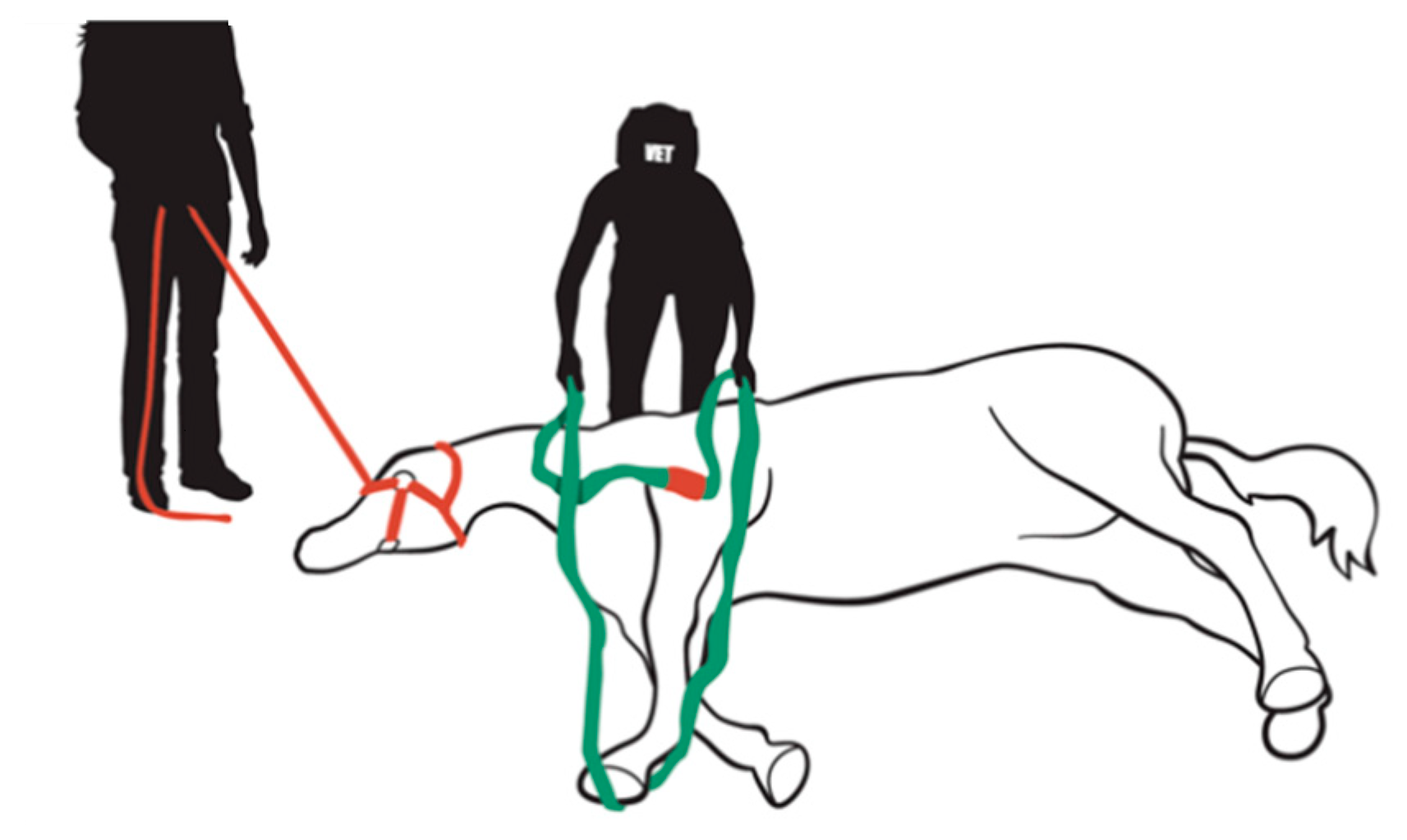
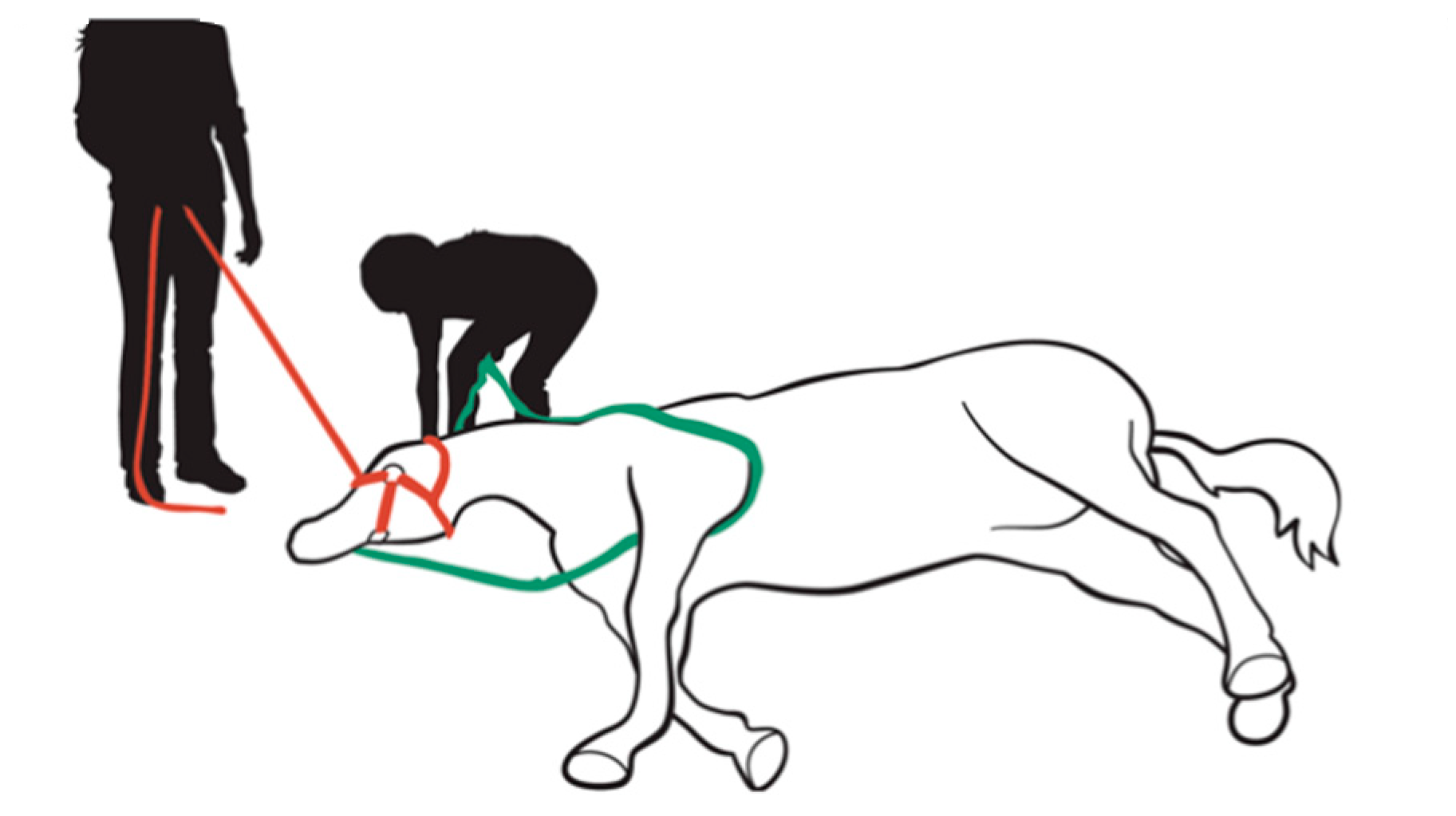
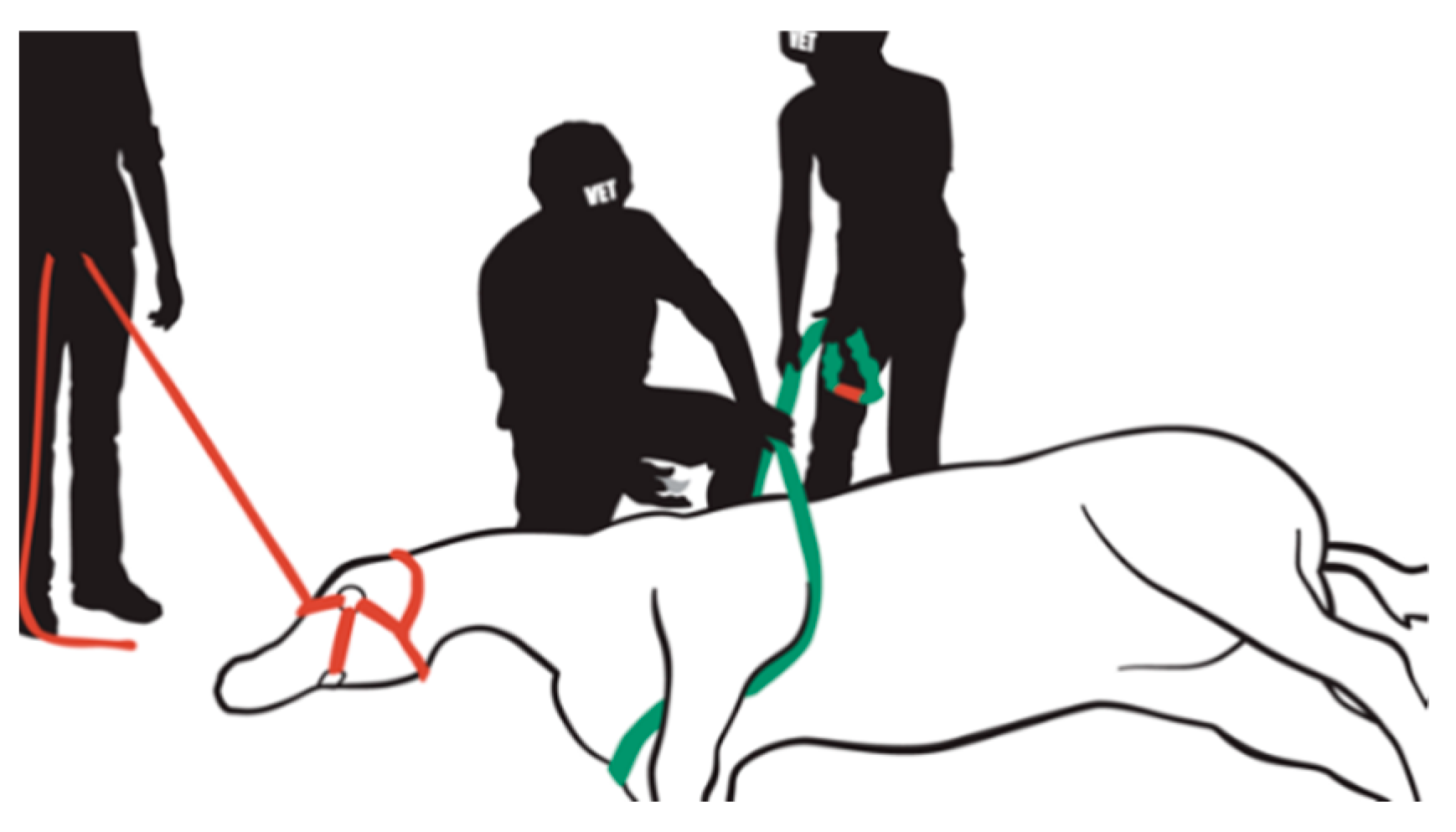
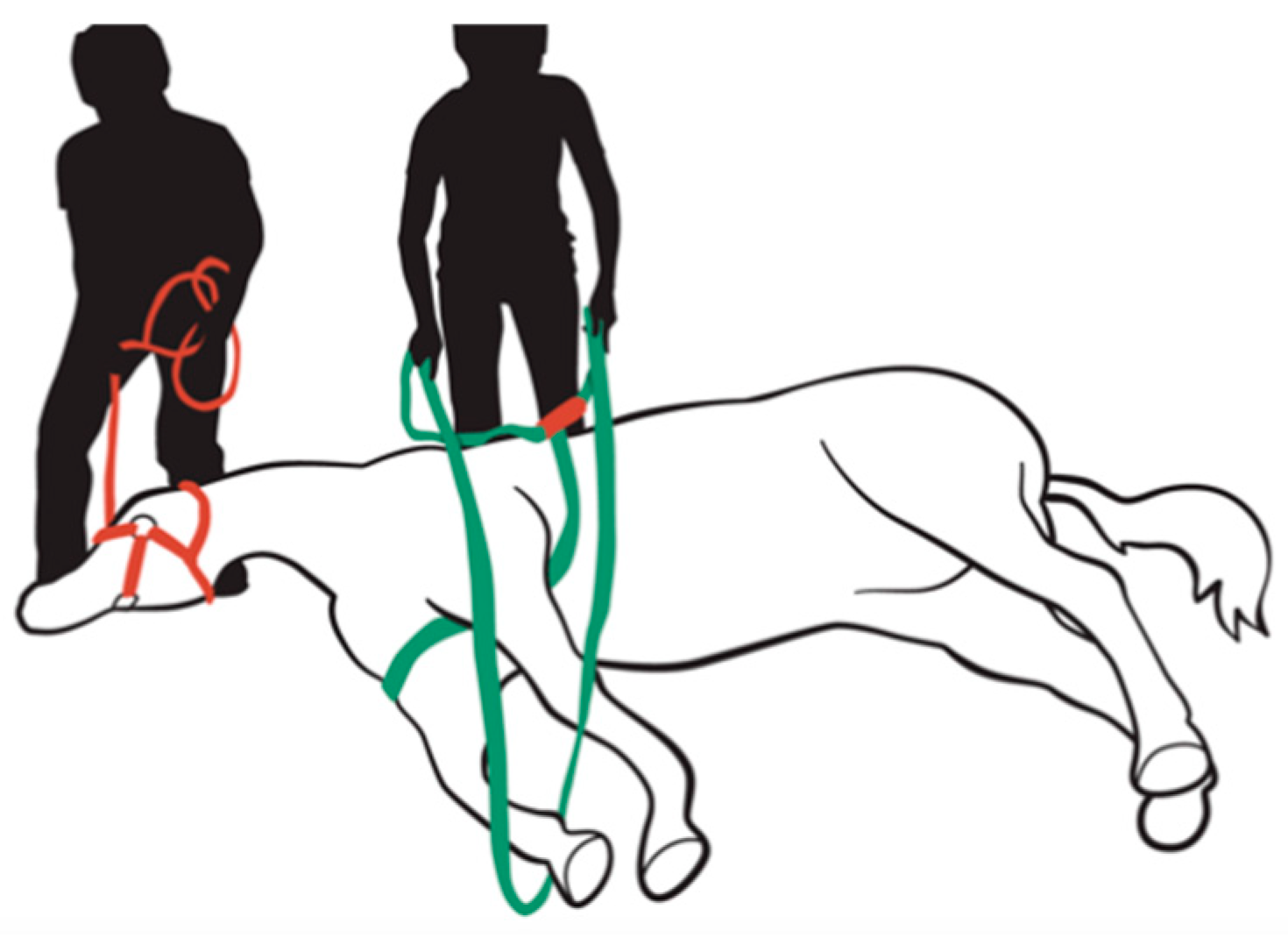
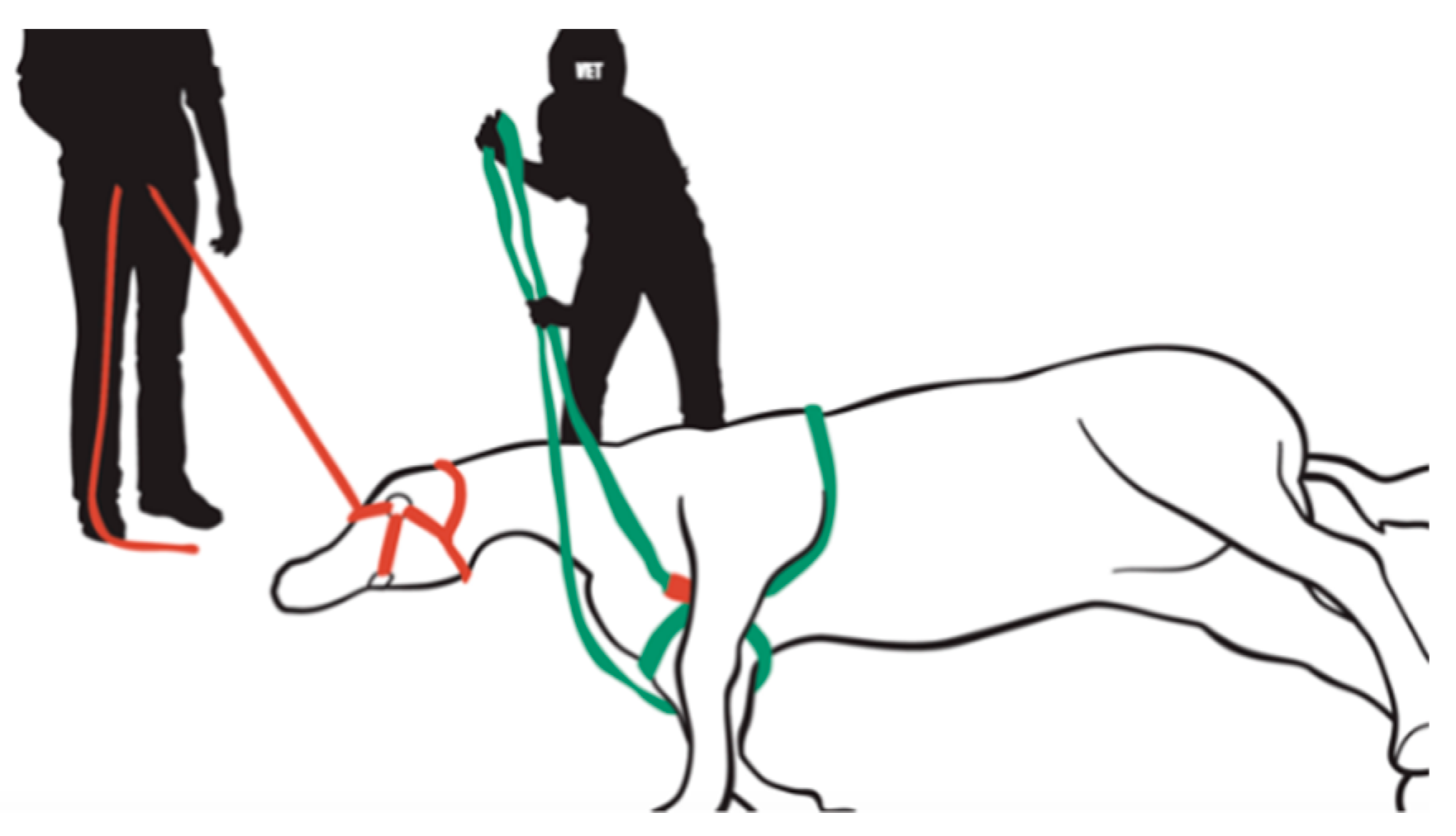
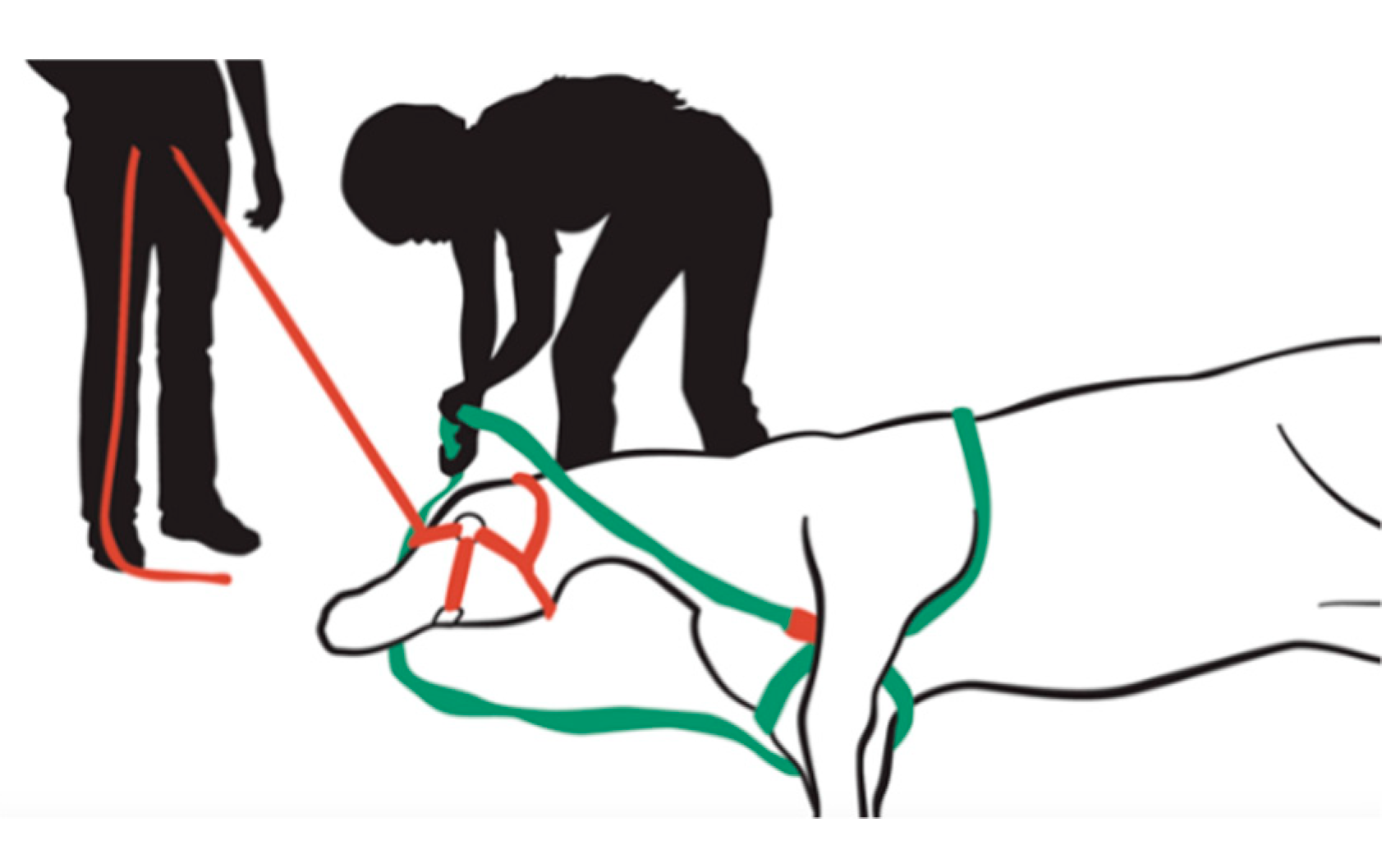
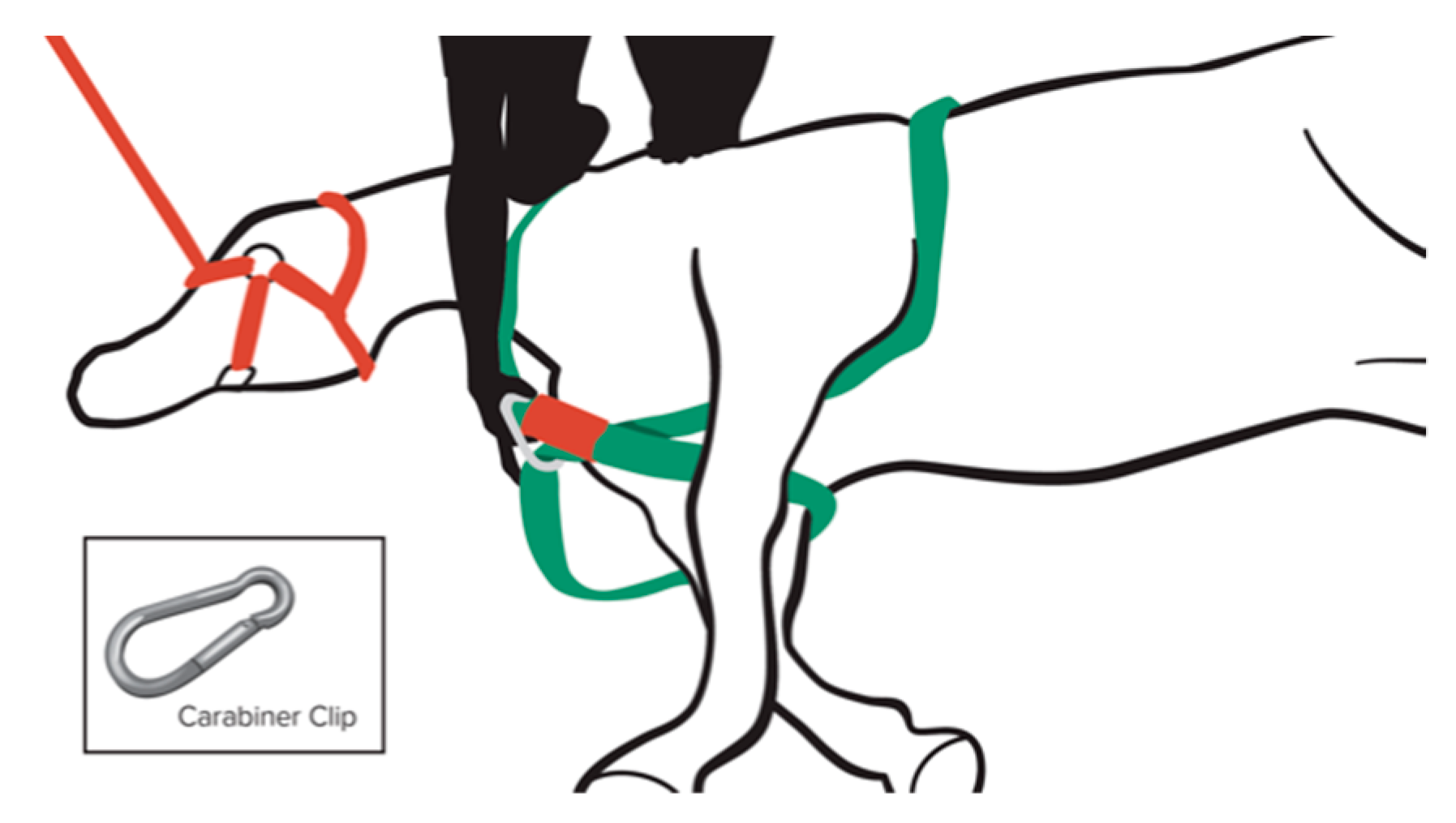
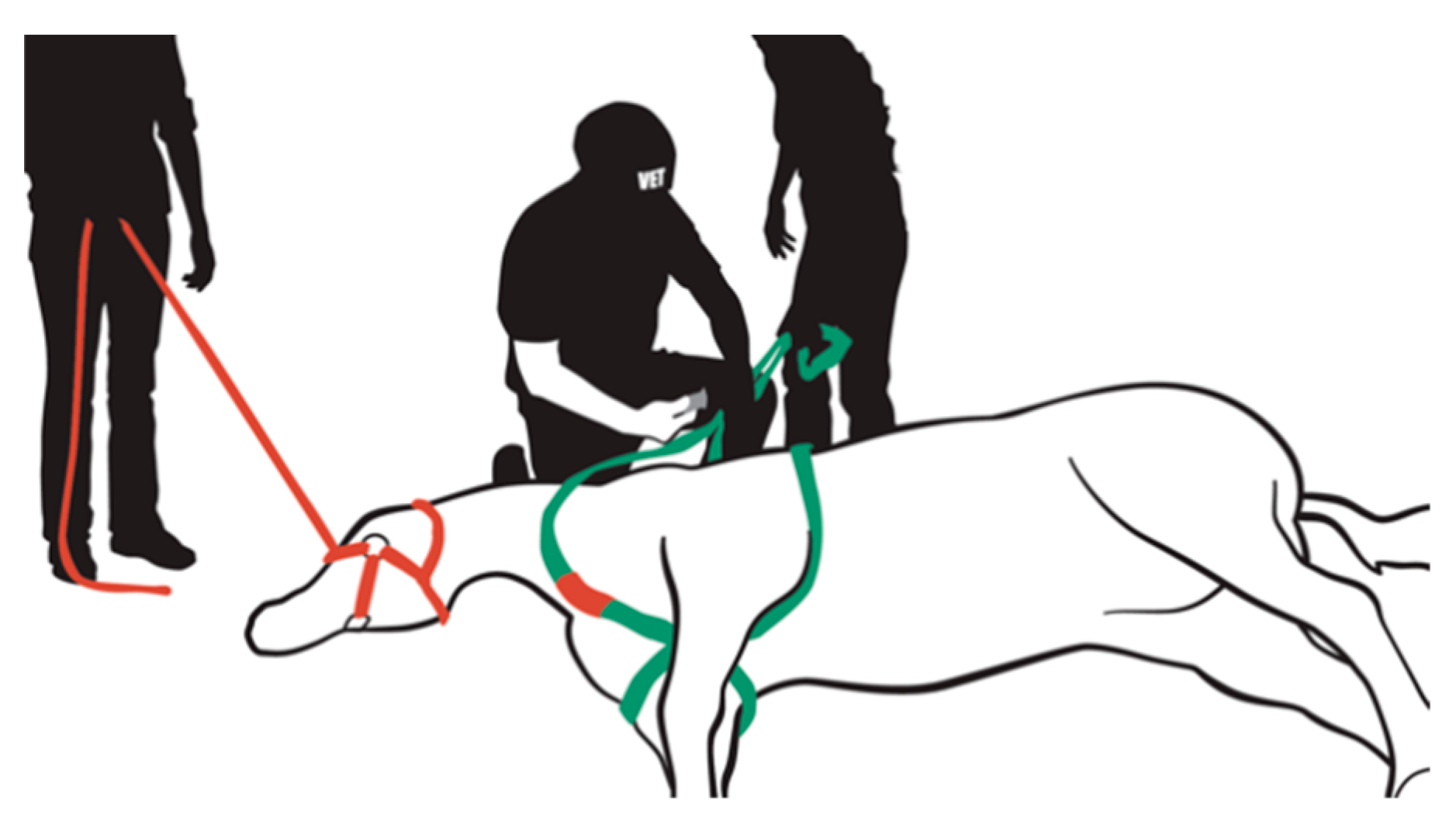
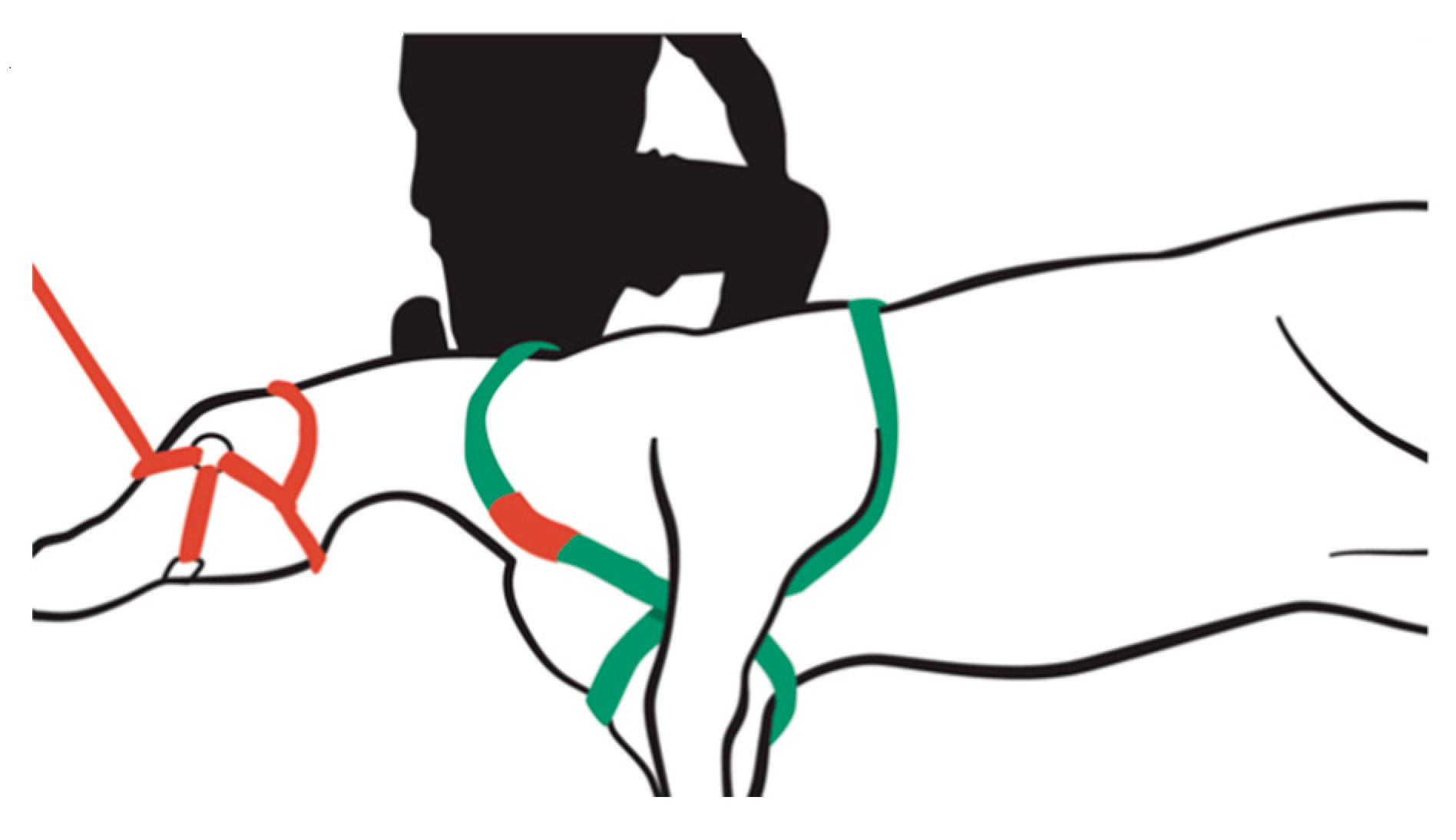
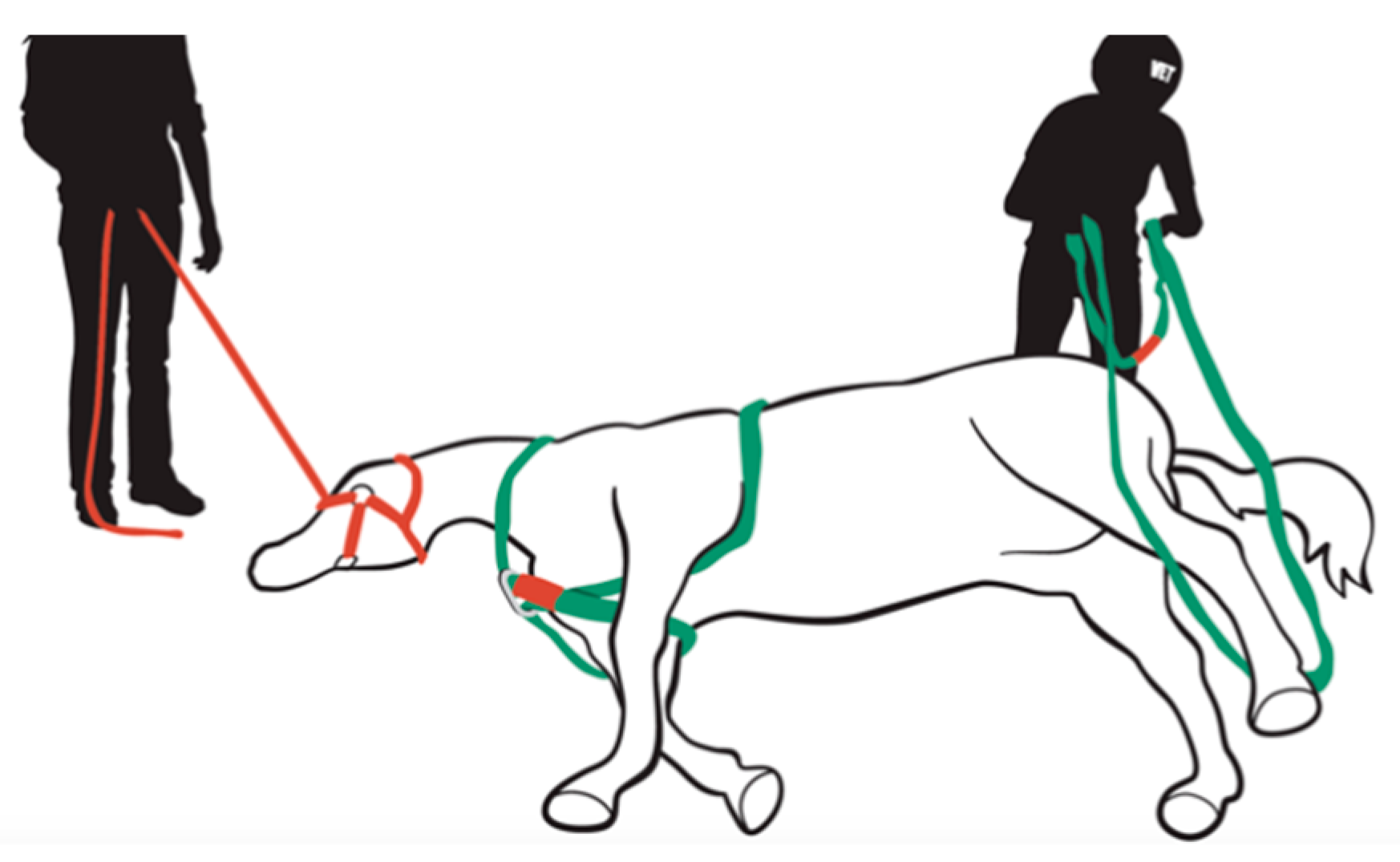
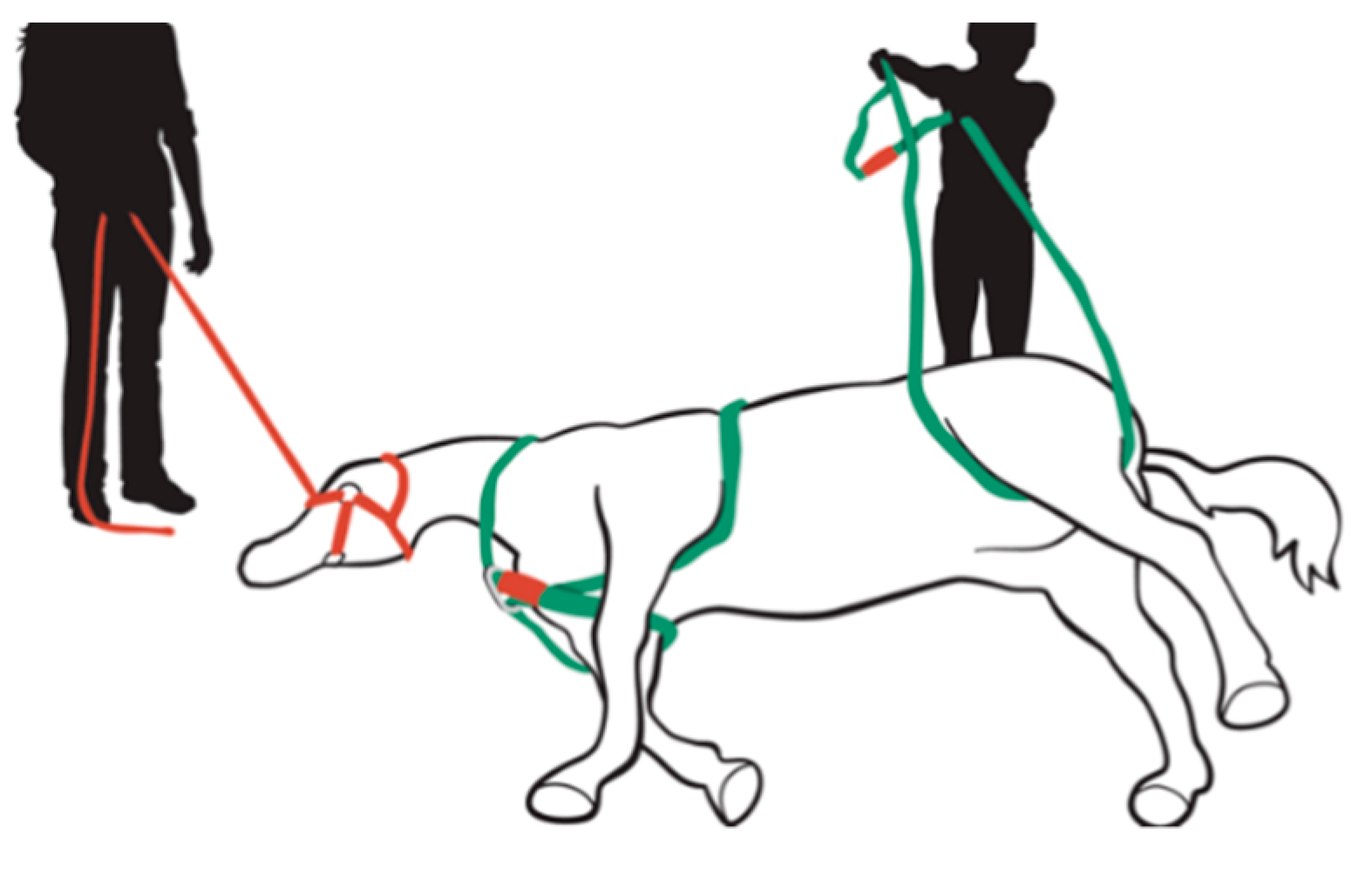
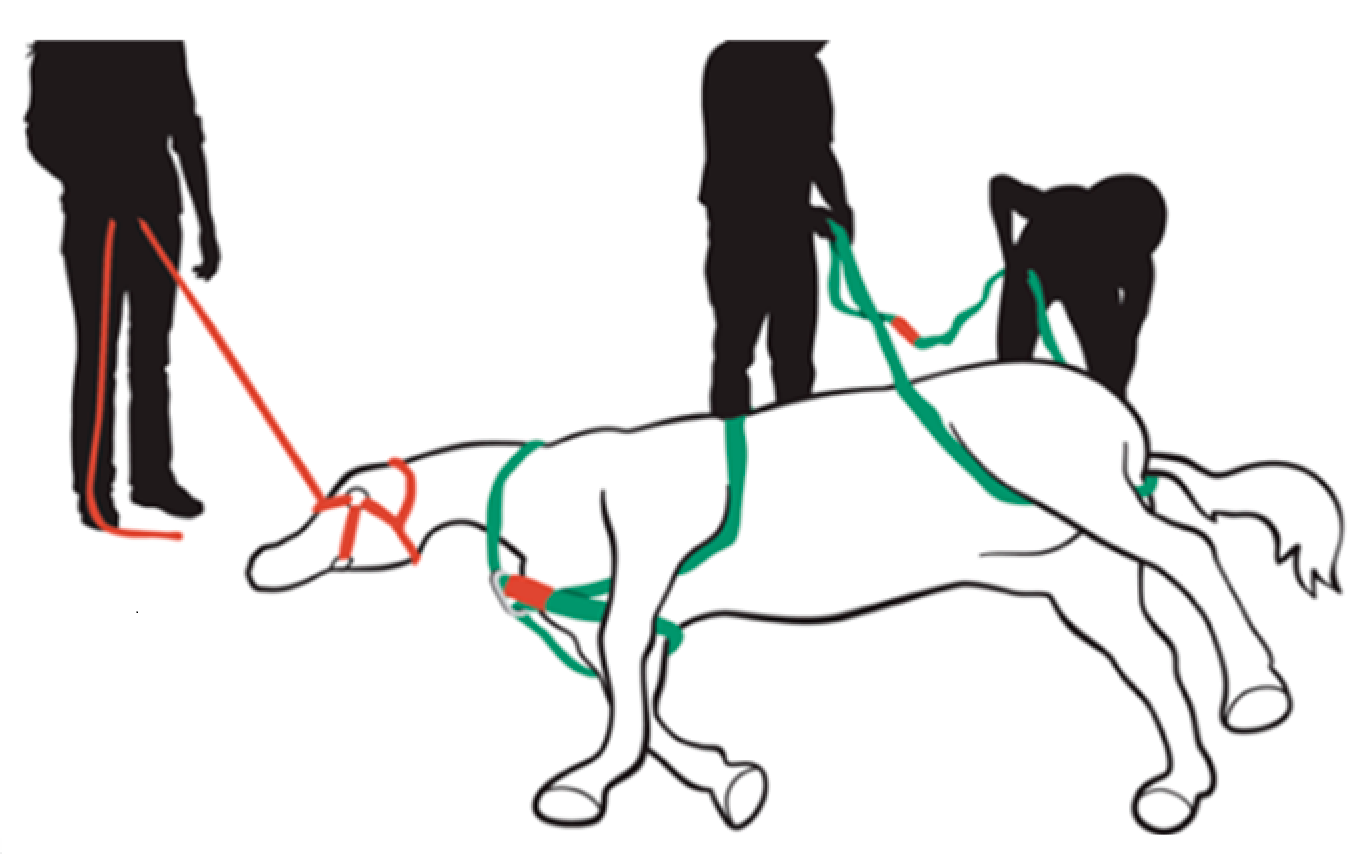
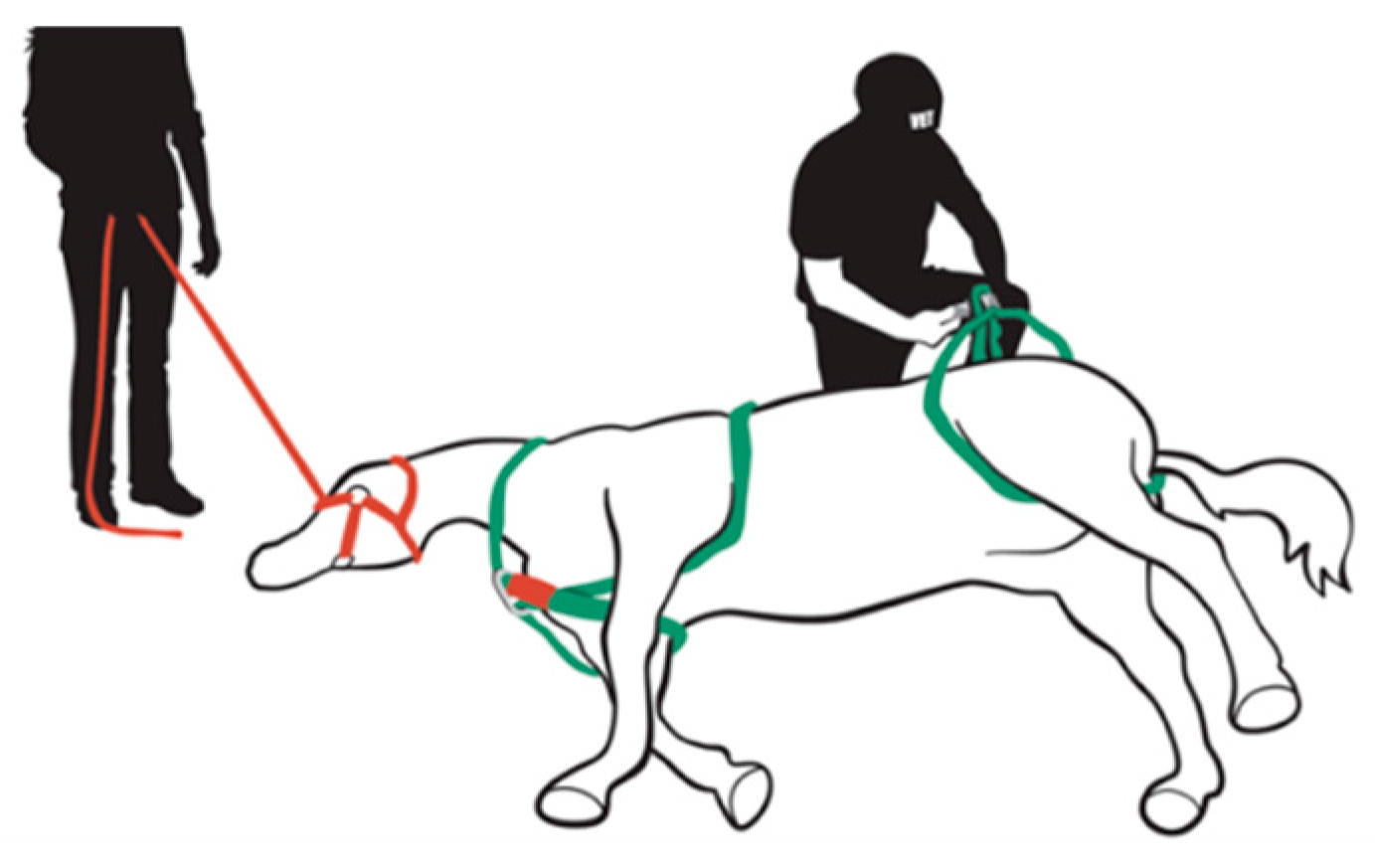
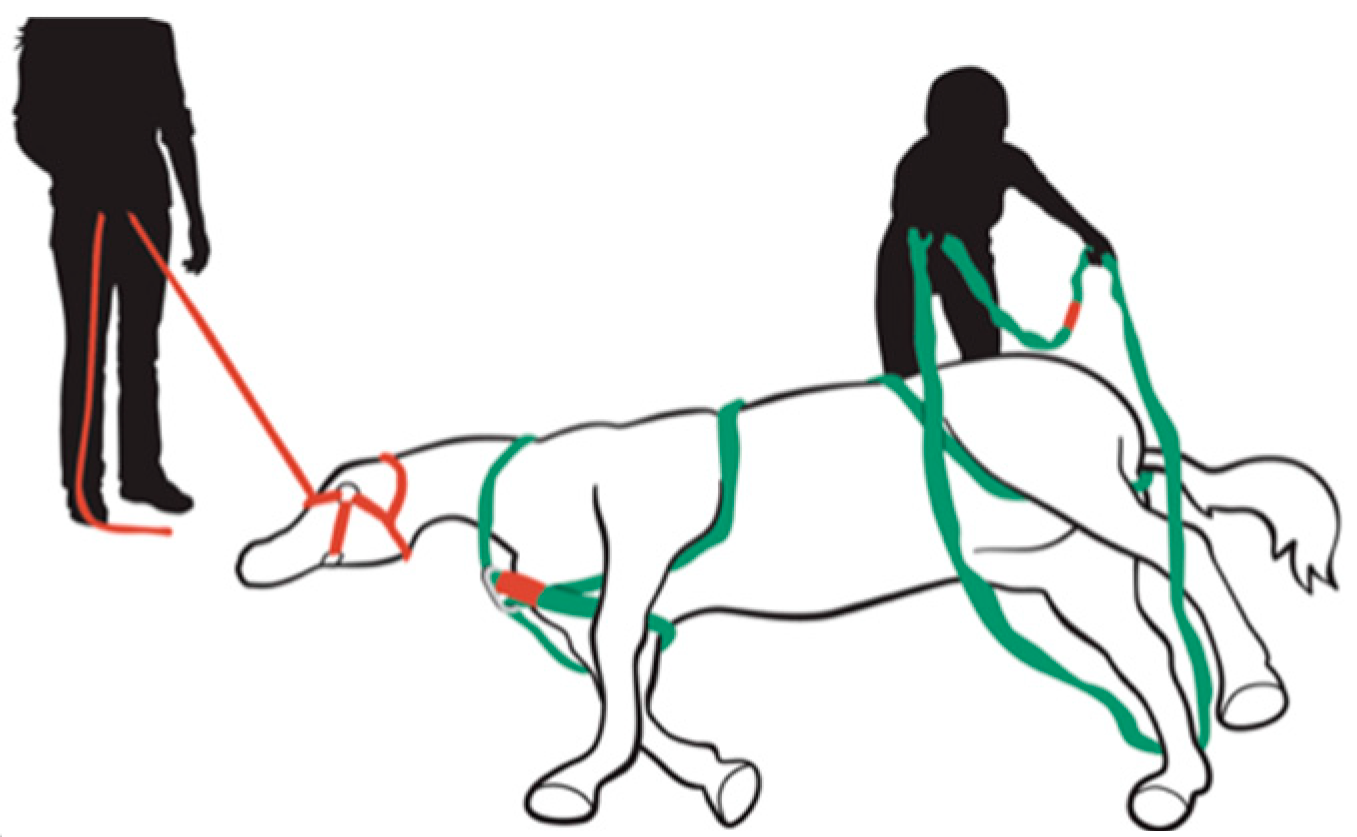
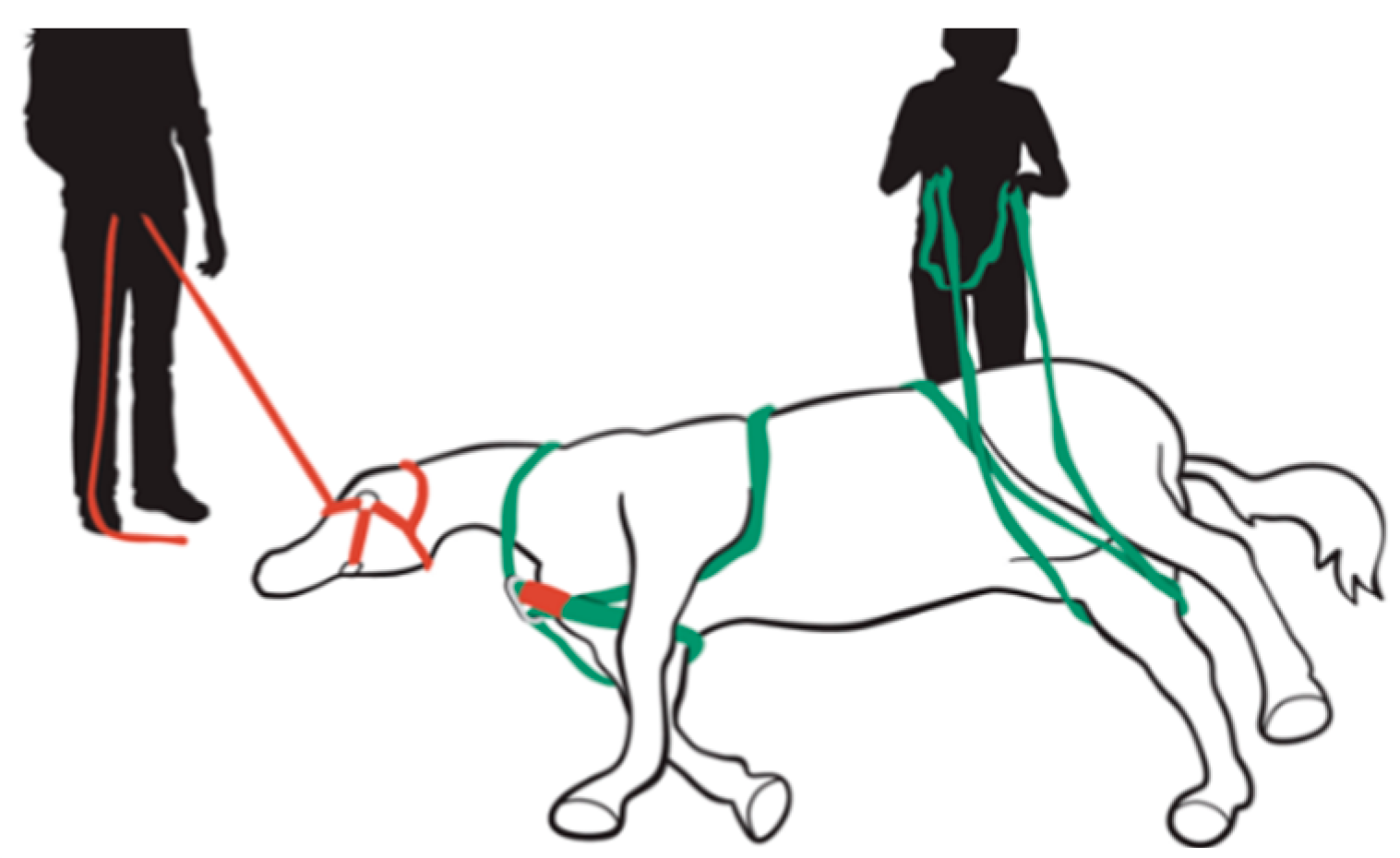
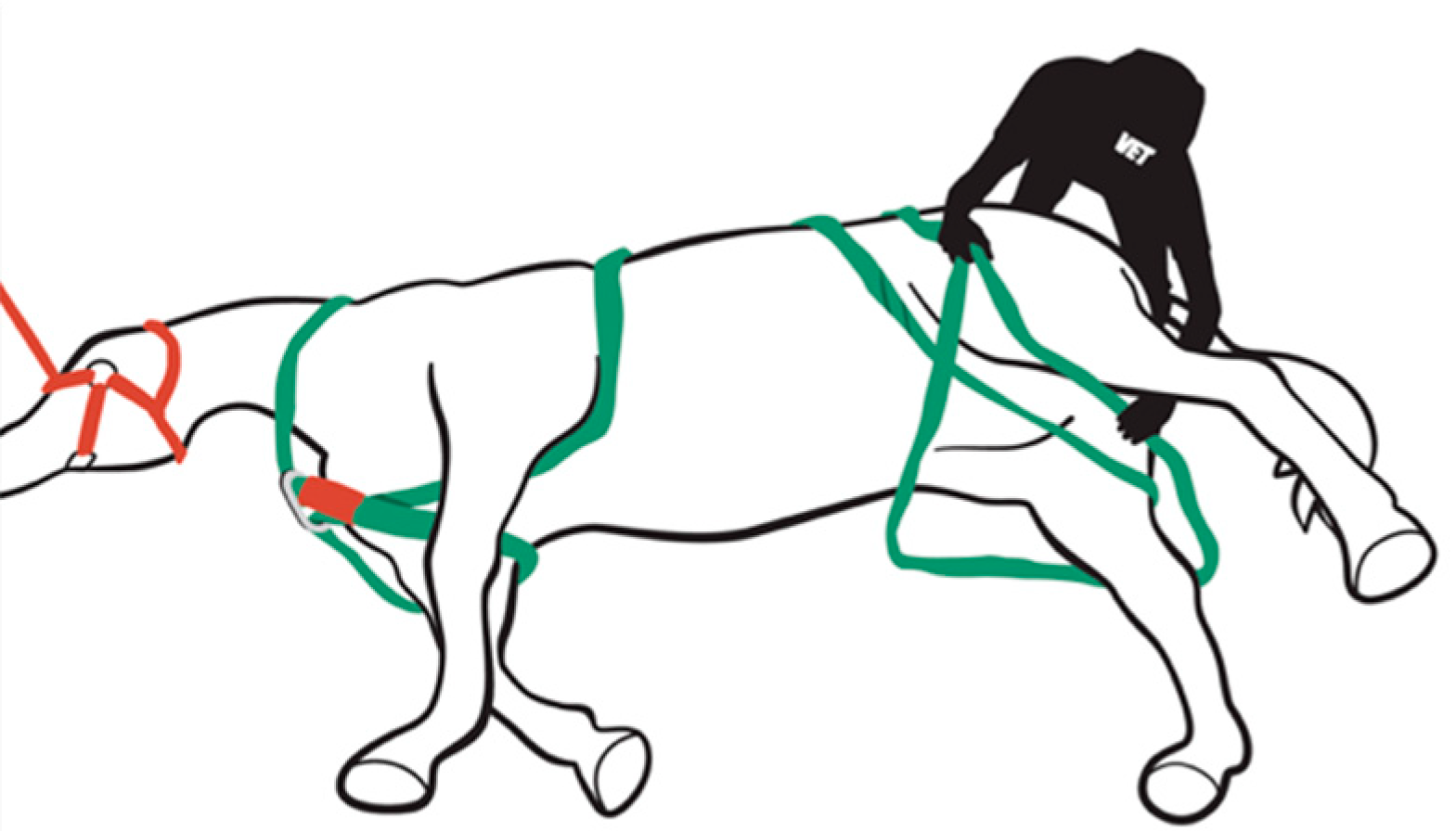
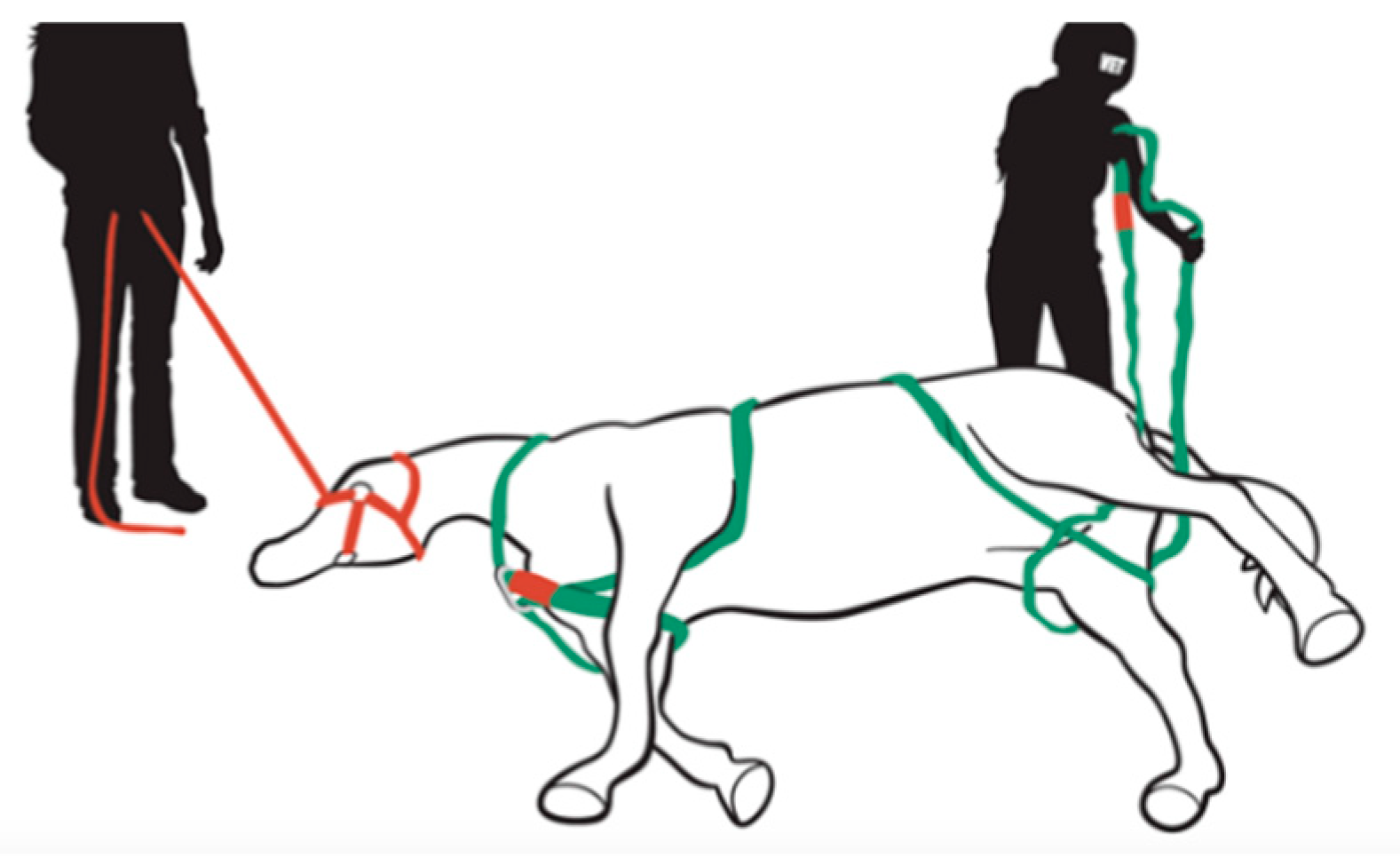
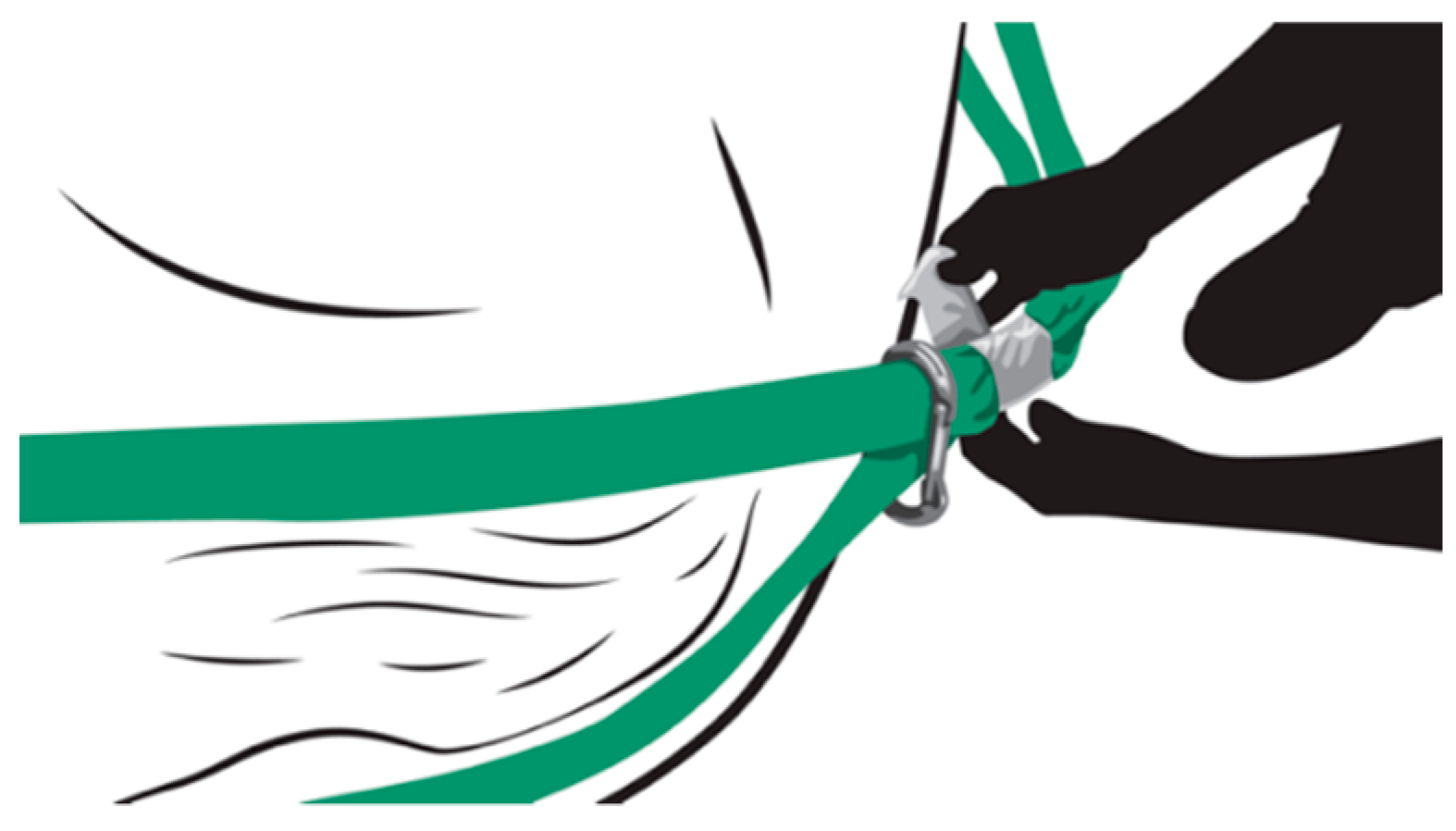
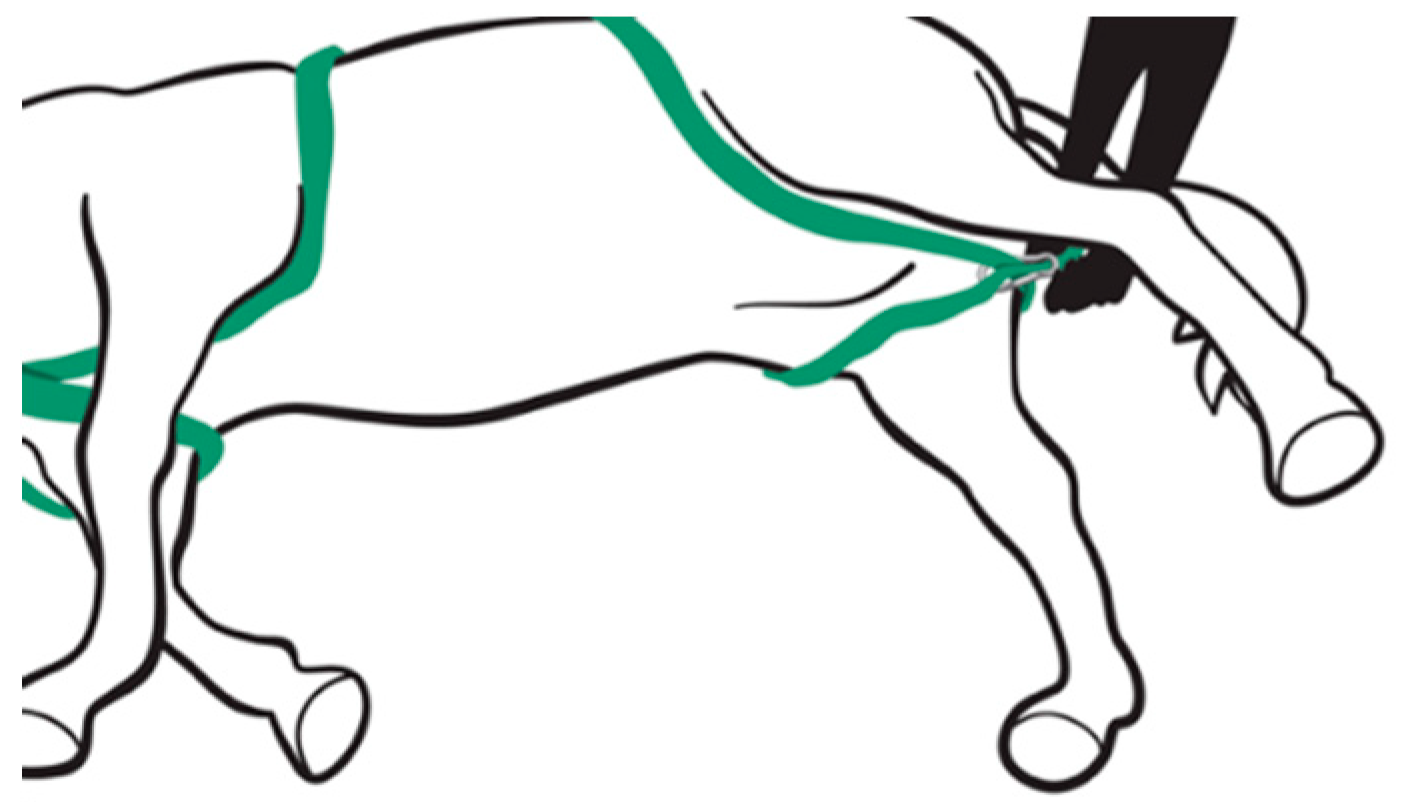
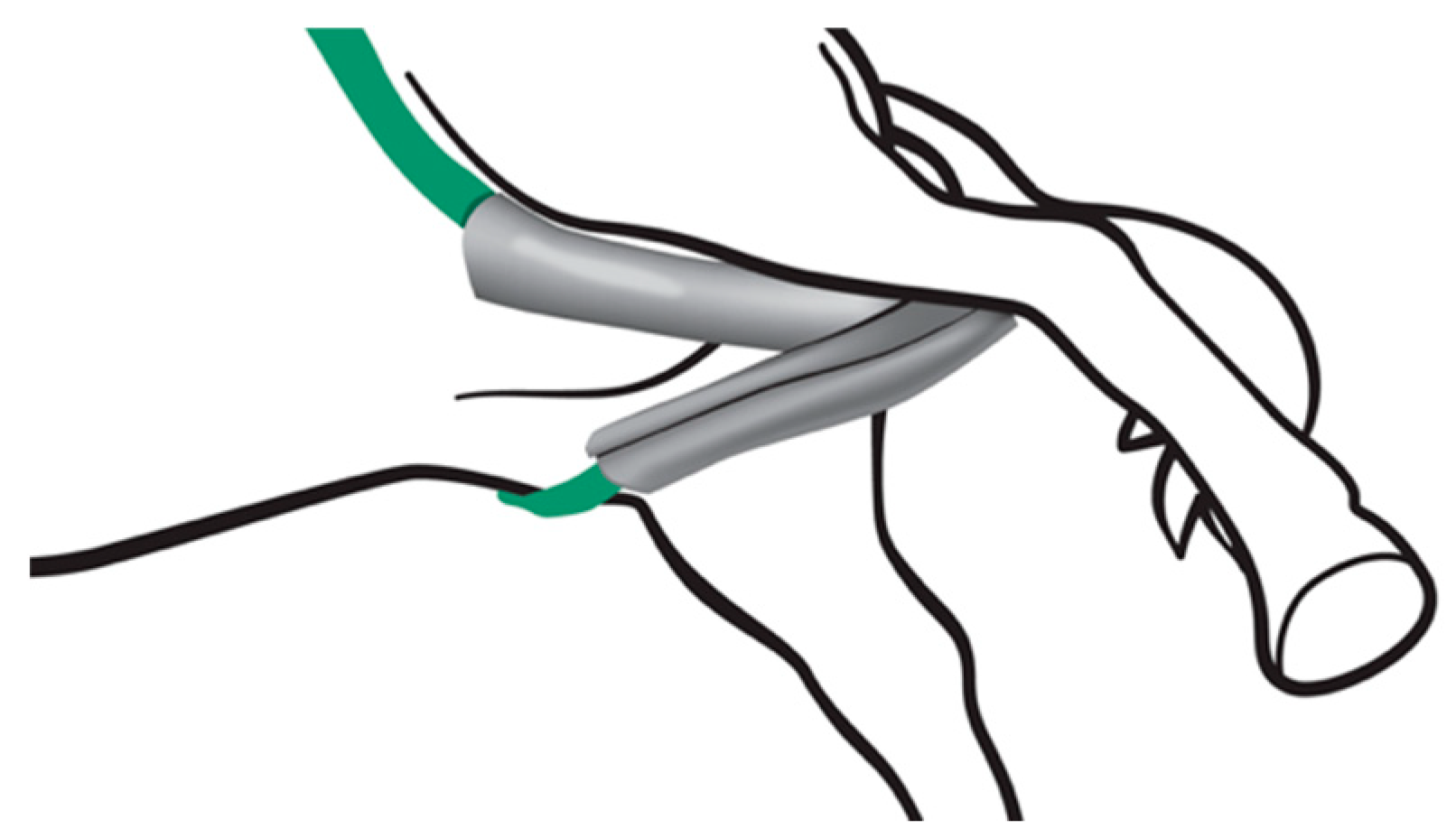
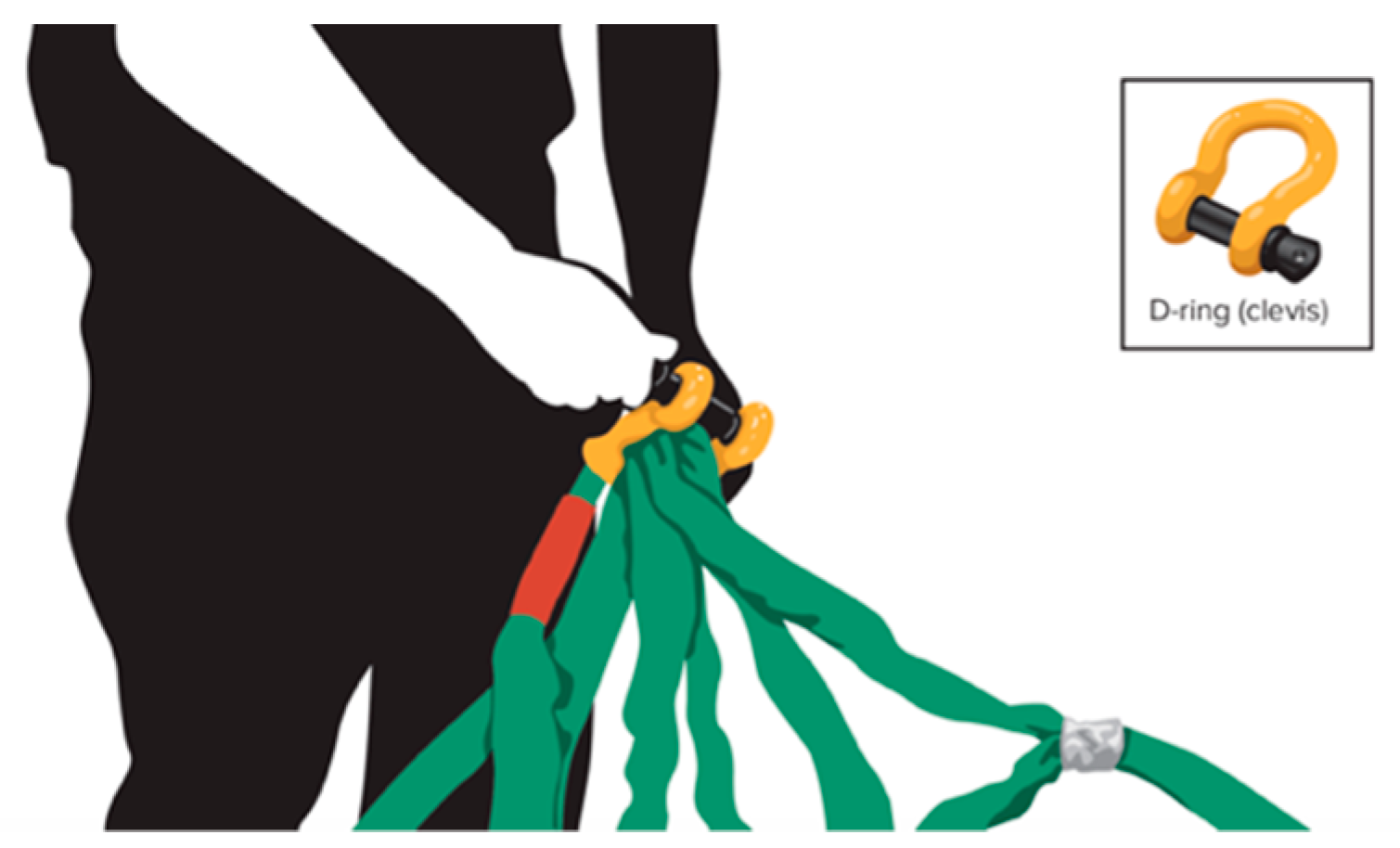
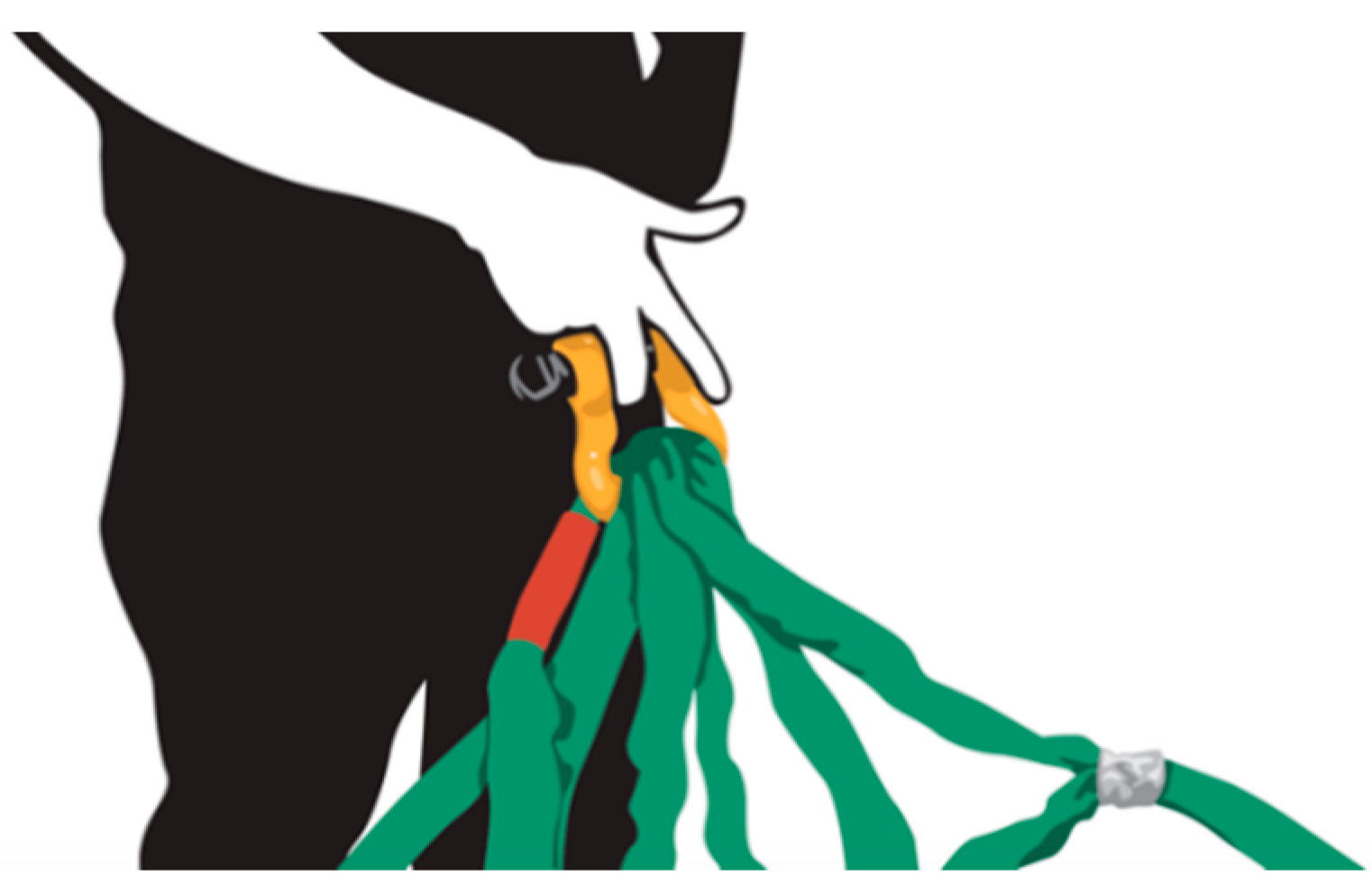
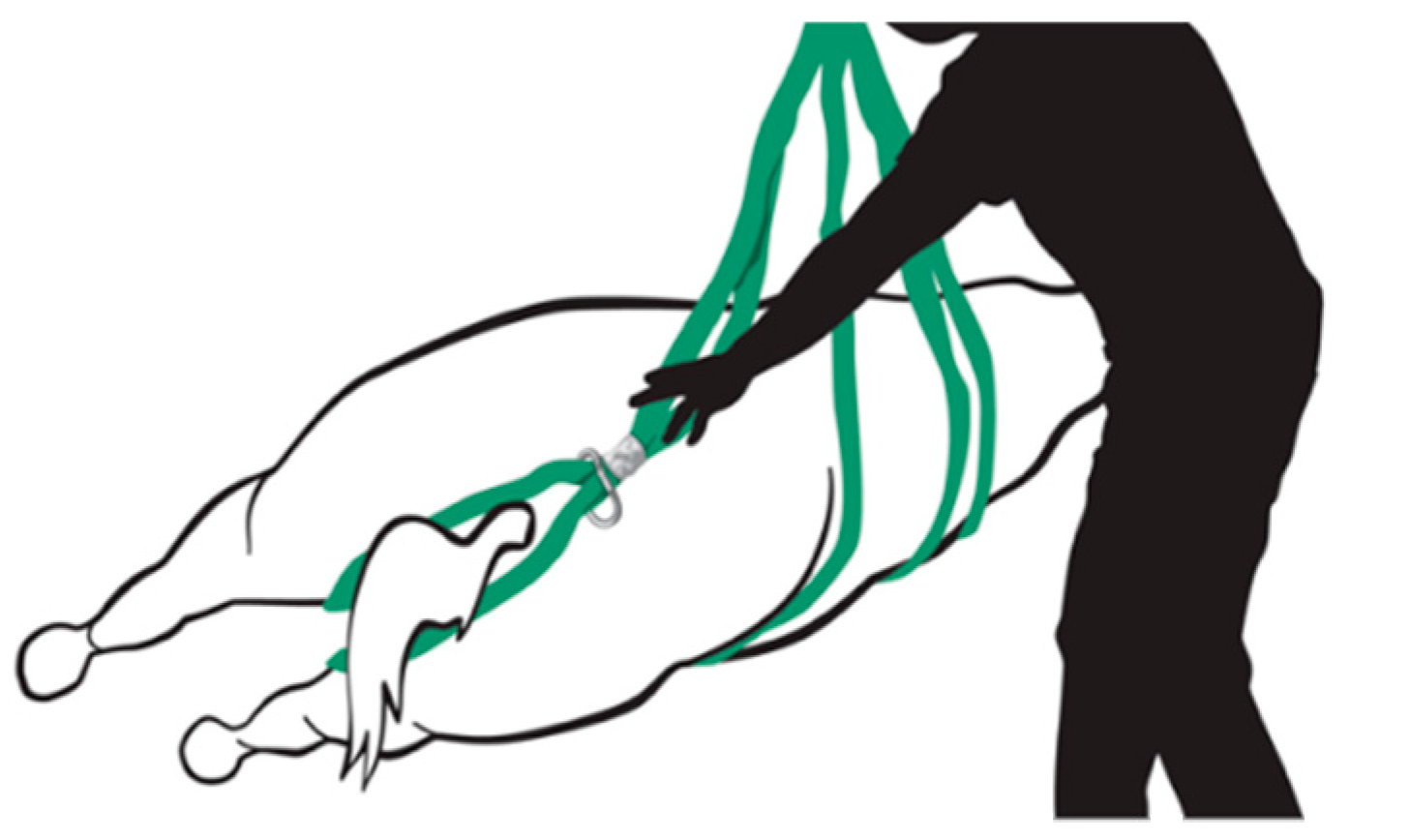
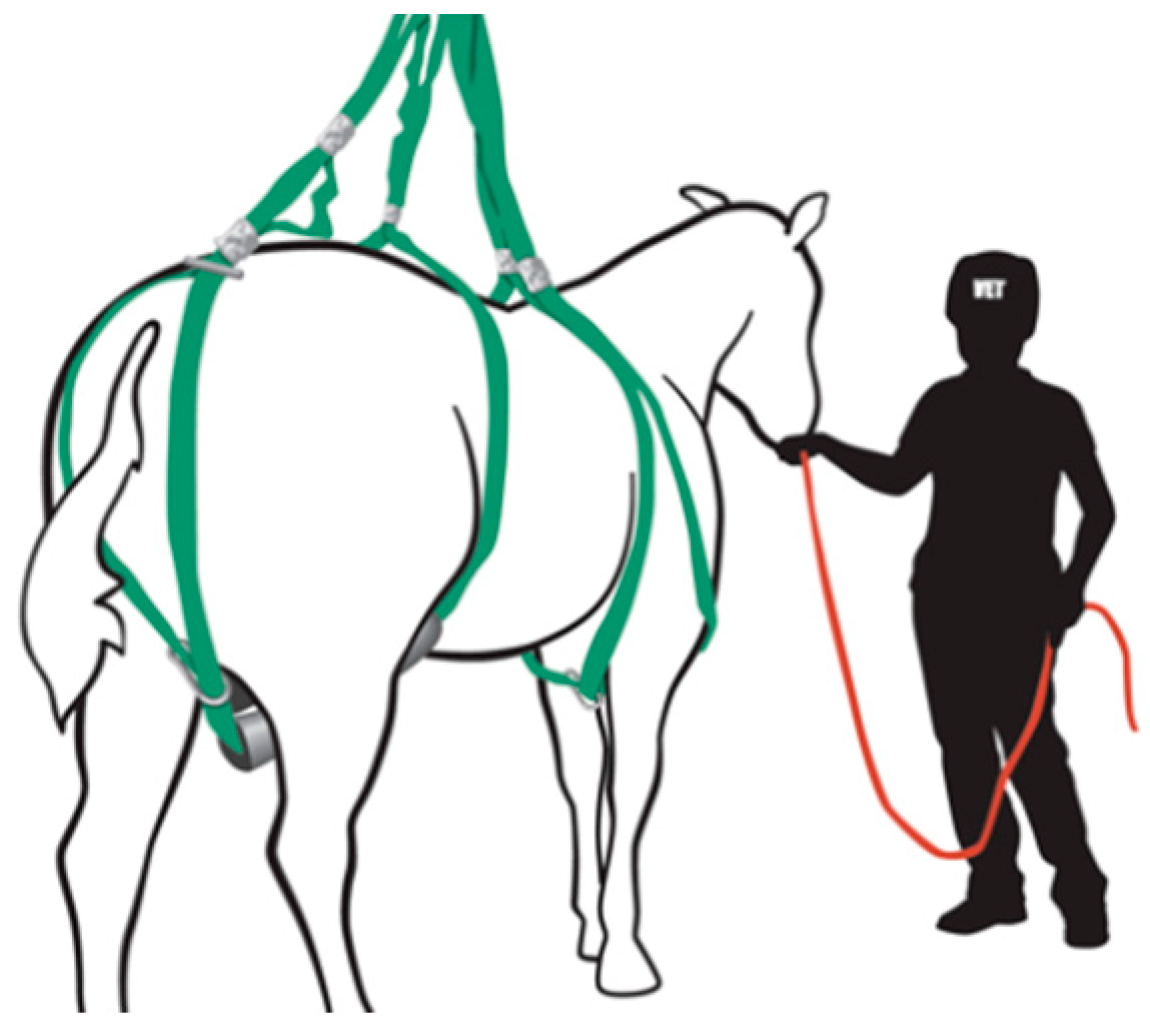
References
- Bowman, K.F. Slinging horses. J. Equine Vet. Sci. 1995, 15, 152–154. [Google Scholar] [CrossRef]
- Madigan, J.E. Stress, shock, chemical restraint and problems of immobilization and restraint of the equine rescue patient. J. Equine Vet. Sci. 1993, 13, 262–263. [Google Scholar] [CrossRef]
- Firrilly, T.; Leighton, M.A.; Riley, C. Helping hands, hurting hooves: Towards a multidisciplinary paradigm of large animal rescue. Aust. J. Emer. Manag. 2015, 30, 2. [Google Scholar]
- Gimenez, T.; Gimenez, R.M.; Baker, J.L.; Johannessen, D.T. How to effectively perform emergency rescue of equines. Am. Assoc. Eq. Pract. 2002, 48, 276. [Google Scholar]
- Winfield, L.S.; Kass, P.H.; Magdesian, K.G.; Madigan, J.E.; Aleman, M.R.; Pusterla, N. Factors associated with survival in 148 recumbent horses40. Equine Vet. J. 2014, 46, 575–578. [Google Scholar] [CrossRef] [PubMed]
- Furst, A.; Keller, R.; Kummer, M.; Manera, C.; von Salis, B.; Auer, J.; Bettschart-Wolfensberger, R. Evaluation of a new full-body animal rescue and transportation sling in horses: 181 horses (1998–2006). J. Vet. Emer. Crit. Care 2008, 18, 619–625. [Google Scholar] [CrossRef]
- Care for Disabled Animals. Available online: https://www.andersonsling.com/anderson-sling (accessed on 9 August 2018).
- Pusterla, N.; Madigan, J.E. Initial clinical impressions of the UC Davis large animal lift and its use in recumbent equine patients. Schweiz Arch Tierheilk 2006, 148, 161–166. [Google Scholar] [CrossRef] [PubMed]
- Professional Work Harnesses. Available online: https://www.climbingtechnology.com/en/professional-en/work-harnesses (accessed on 9 August 2018).
- Lift-All 2014. Tuflex Roundslings. Available online: https://www.lift-all.com/pdf/2014/Roundslings.pdf (accessed on 9 August 2018).
- International Animal Welfare Training Institute. Available online: https://iawti.vetmed.ucdavis.edu (accessed on 9 August 2019).
- Madigan, J.; Costa, L.; Nieves, S.; Horgan, M.; Weberg, K.; Aleman, M. Evaluation of a simplified loops system for emergency rescue lifting of the stranded or recumbent horse. Animals 2019, 9, 511. [Google Scholar] [CrossRef] [PubMed]
- Thomas, K.E.; Annest, J.L.; Gilchrist, J.; Bixby-Hammett, D.M. Non-fatal horse related injuries treated in emergency departments in the United States 2001–2003. Br. J. Sports Med. 2006, 40, 619–626. [Google Scholar] [CrossRef] [PubMed]
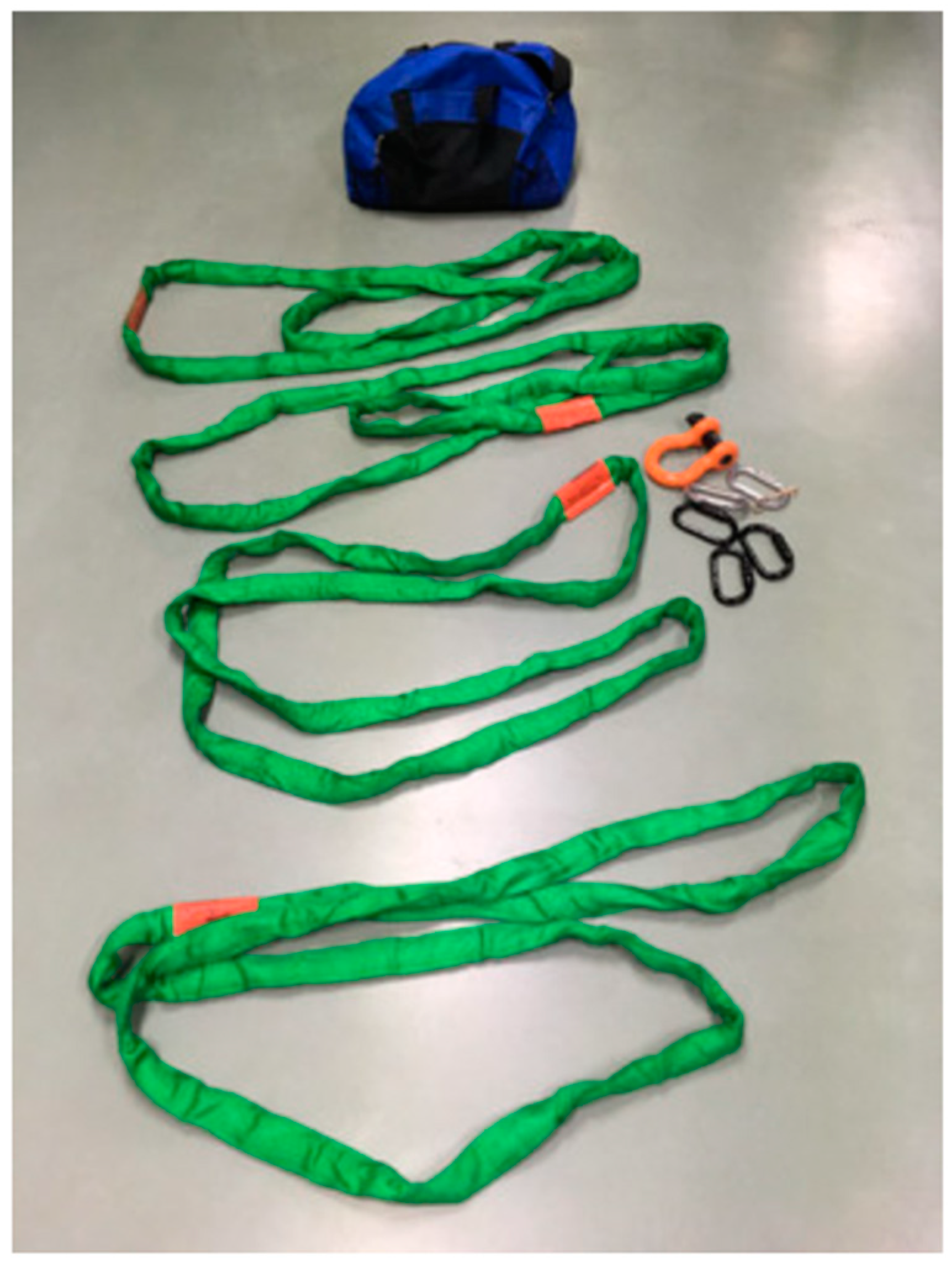
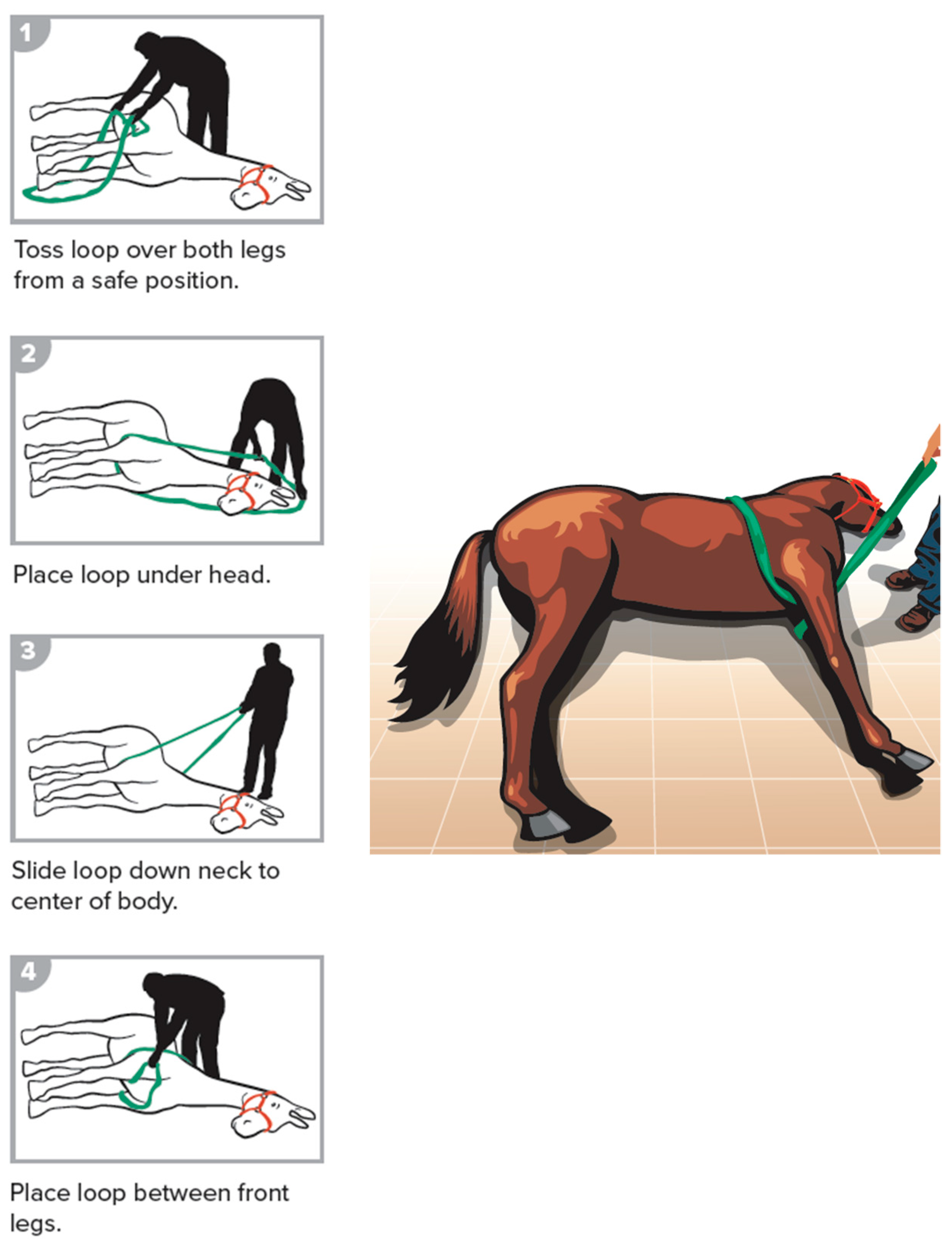
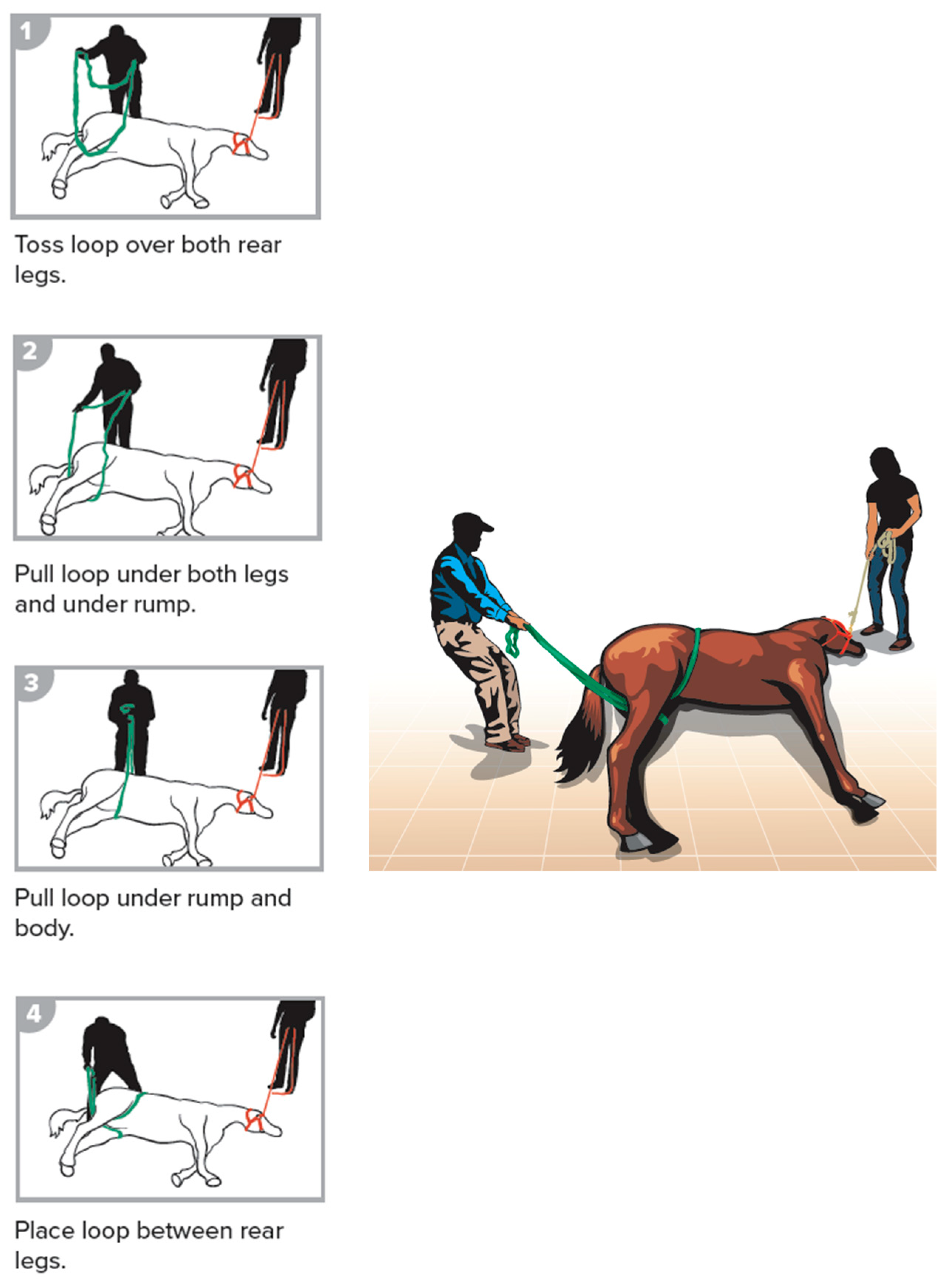
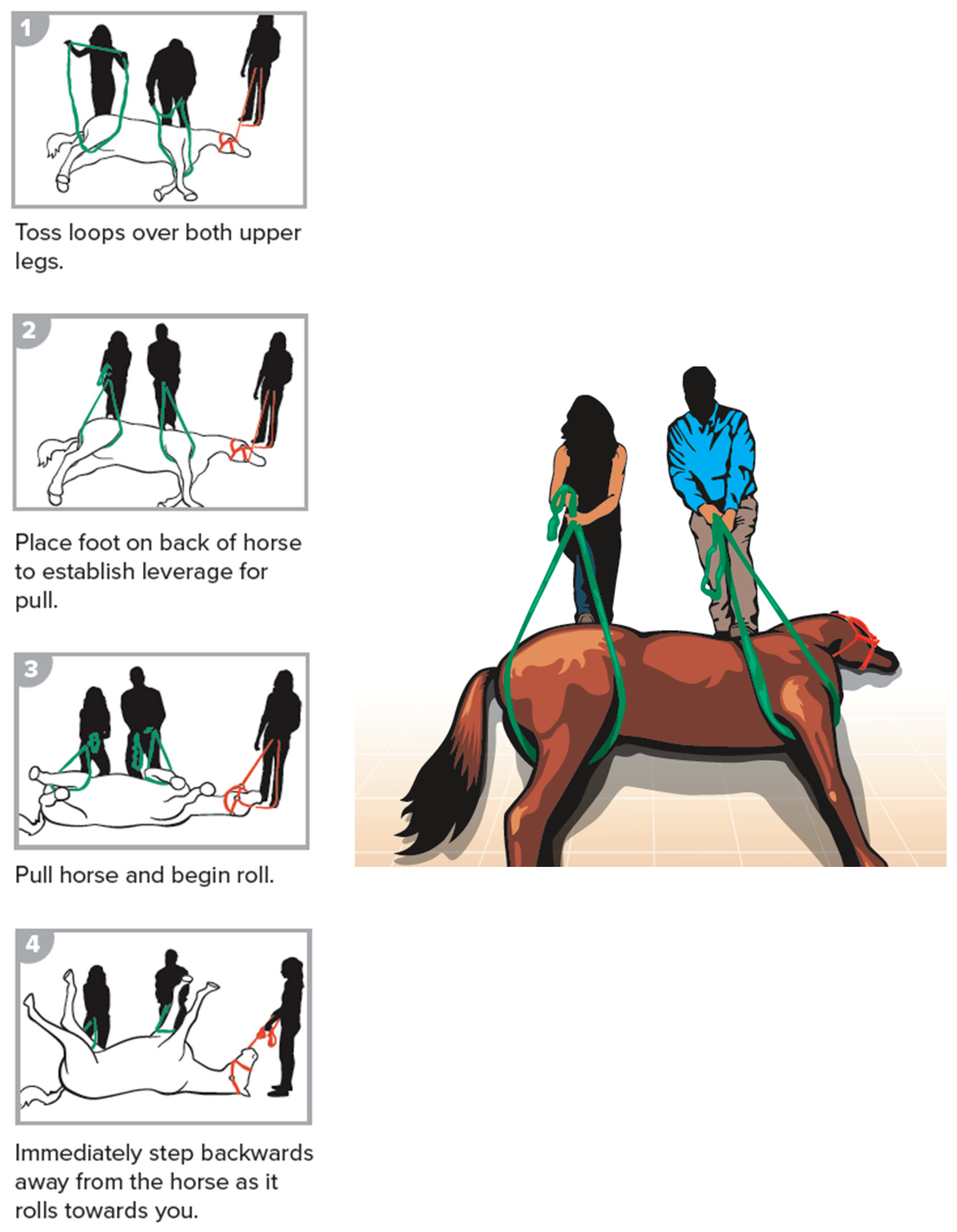
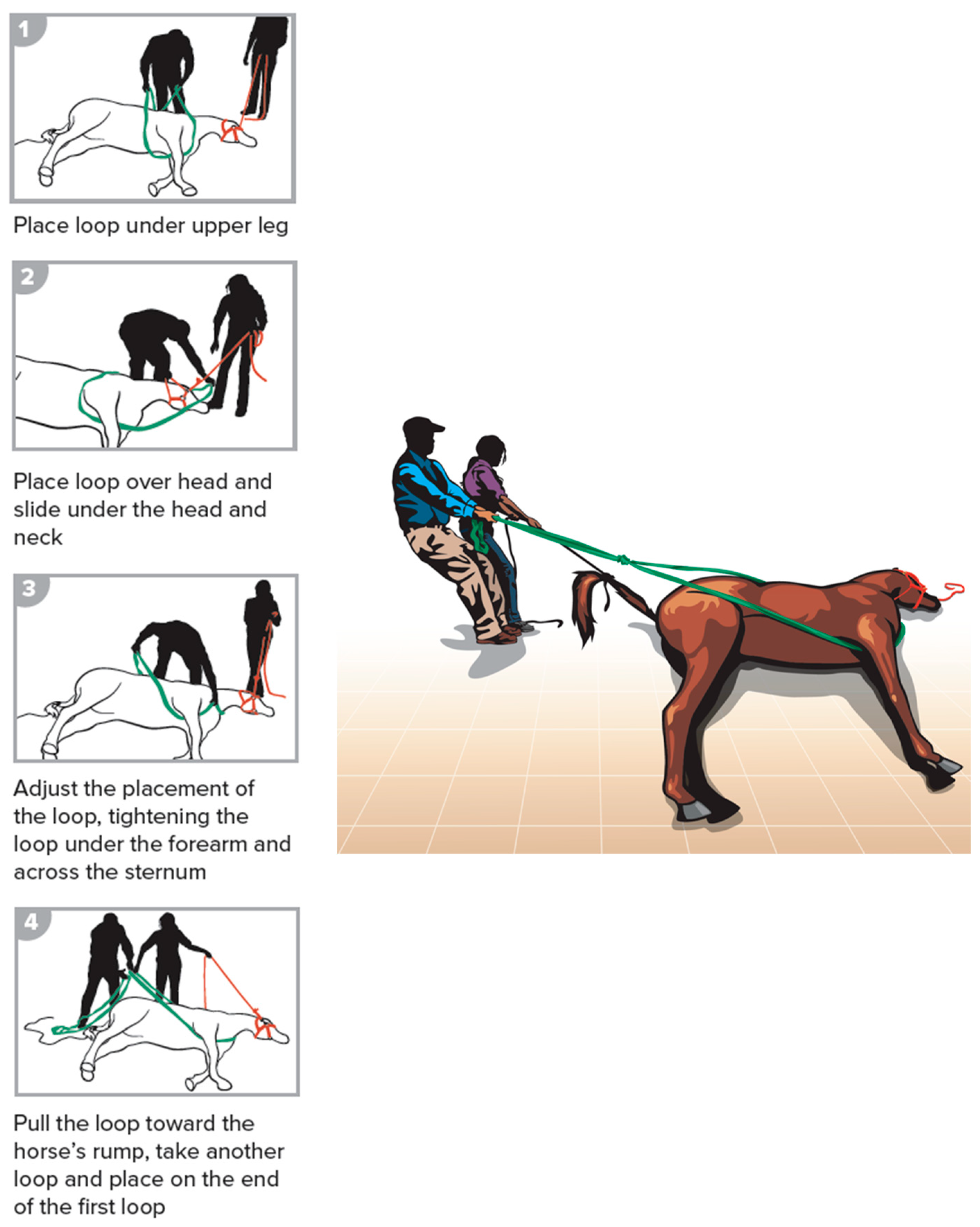
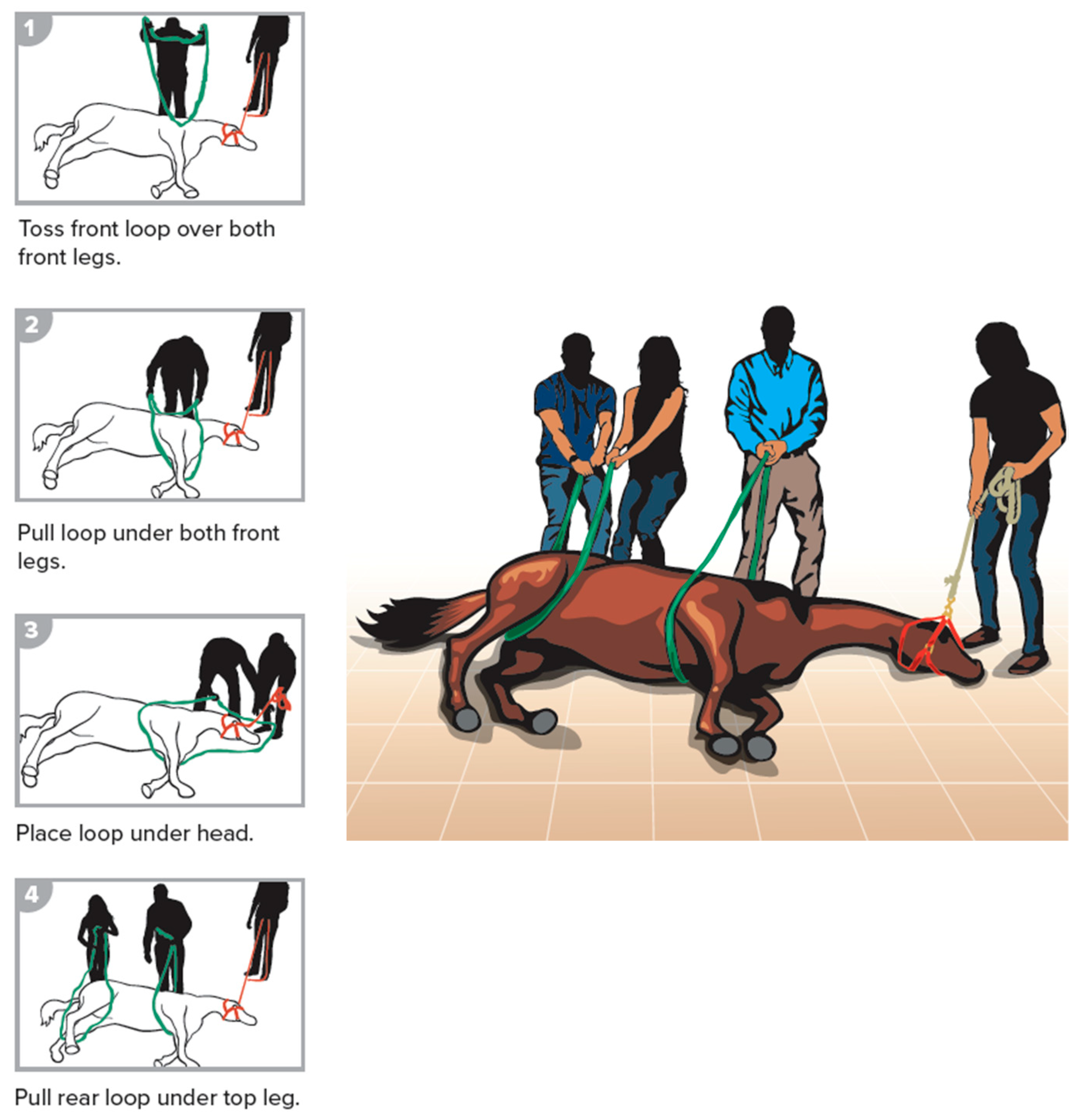
© 2019 by the authors. Licensee MDPI, Basel, Switzerland. This article is an open access article distributed under the terms and conditions of the Creative Commons Attribution (CC BY) license (http://creativecommons.org/licenses/by/4.0/).
Share and Cite
Madigan, J.; Costa, L.; Nieves, S.; Horgan, M.; Weberg, K.; Aleman, M. Description of Placement Procedures for Common Methods Used in Equine Emergency Rescue Using a Simplified Loops System. Animals 2019, 9, 529. https://doi.org/10.3390/ani9080529
Madigan J, Costa L, Nieves S, Horgan M, Weberg K, Aleman M. Description of Placement Procedures for Common Methods Used in Equine Emergency Rescue Using a Simplified Loops System. Animals. 2019; 9(8):529. https://doi.org/10.3390/ani9080529
Chicago/Turabian StyleMadigan, John, Lais Costa, Samantha Nieves, Molly Horgan, Kirsten Weberg, and Monica Aleman. 2019. "Description of Placement Procedures for Common Methods Used in Equine Emergency Rescue Using a Simplified Loops System" Animals 9, no. 8: 529. https://doi.org/10.3390/ani9080529
APA StyleMadigan, J., Costa, L., Nieves, S., Horgan, M., Weberg, K., & Aleman, M. (2019). Description of Placement Procedures for Common Methods Used in Equine Emergency Rescue Using a Simplified Loops System. Animals, 9(8), 529. https://doi.org/10.3390/ani9080529




